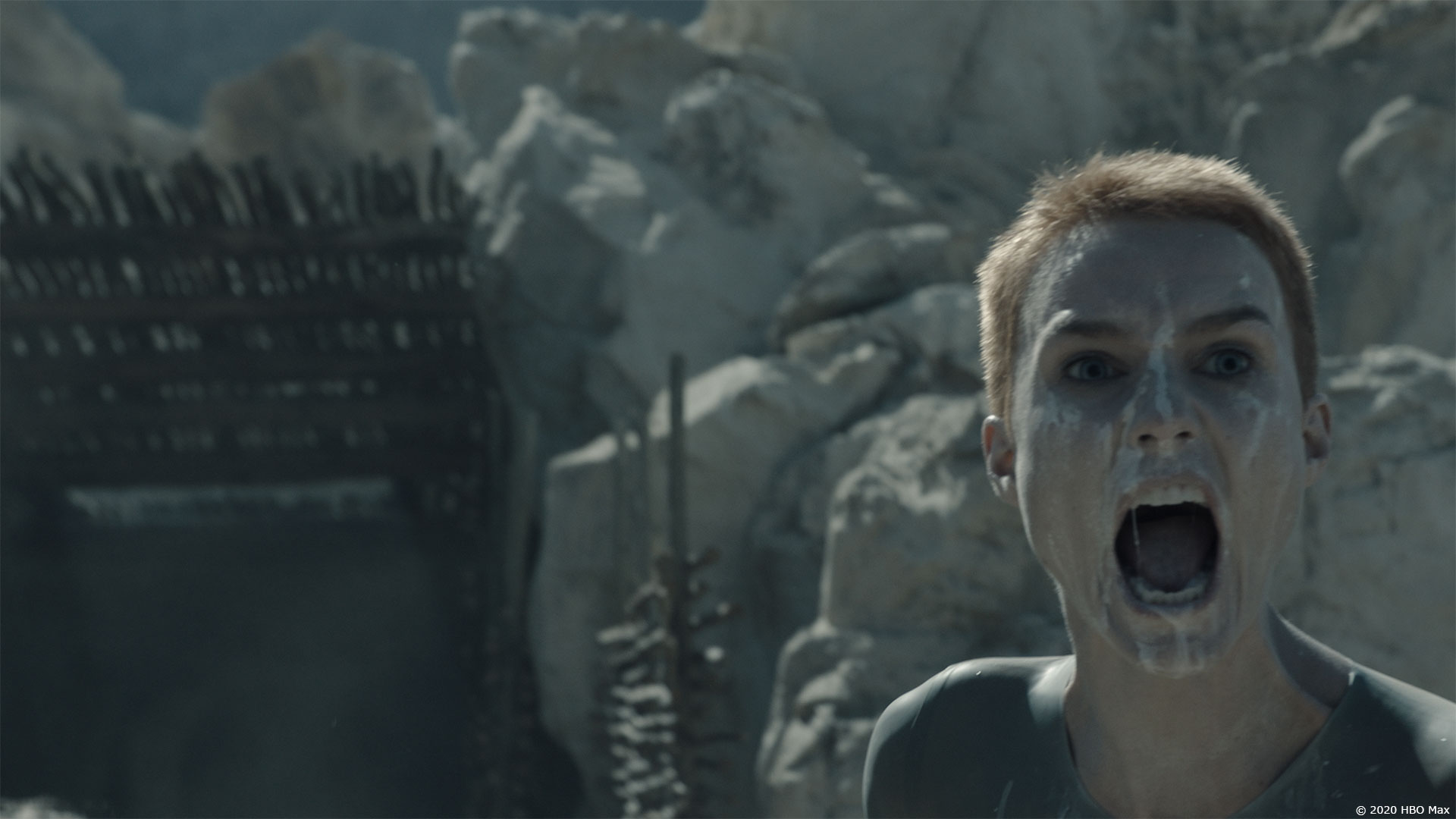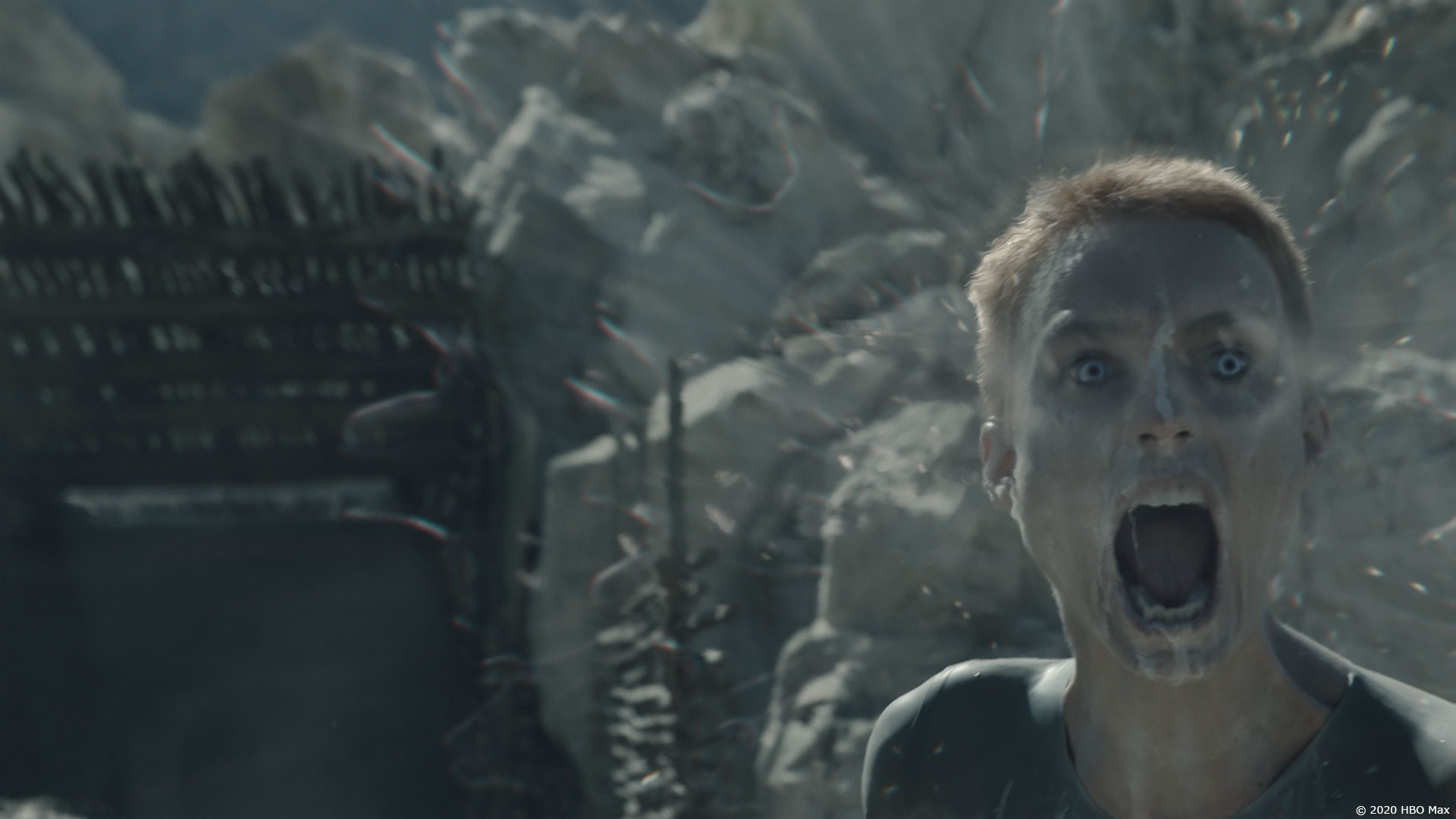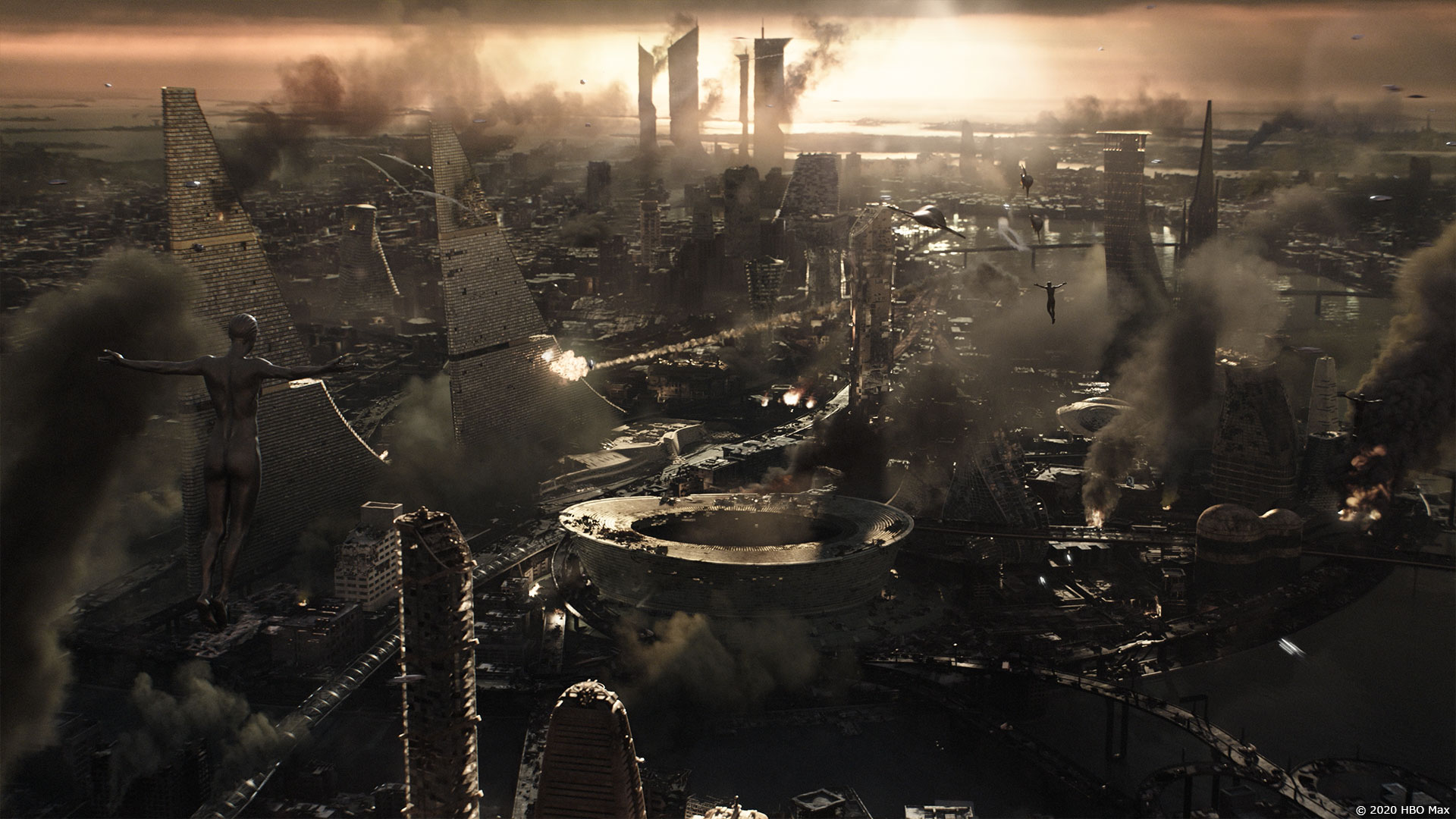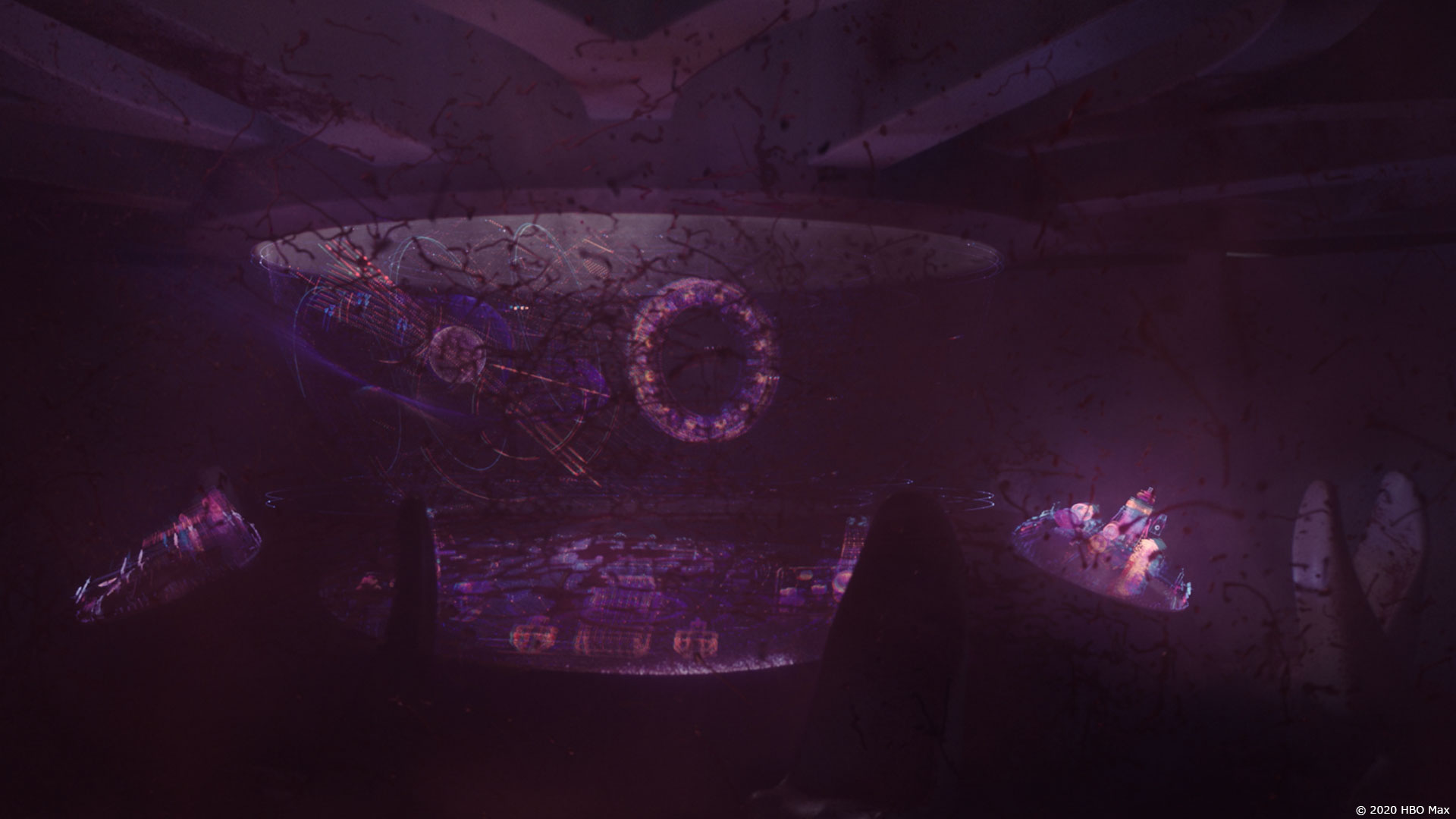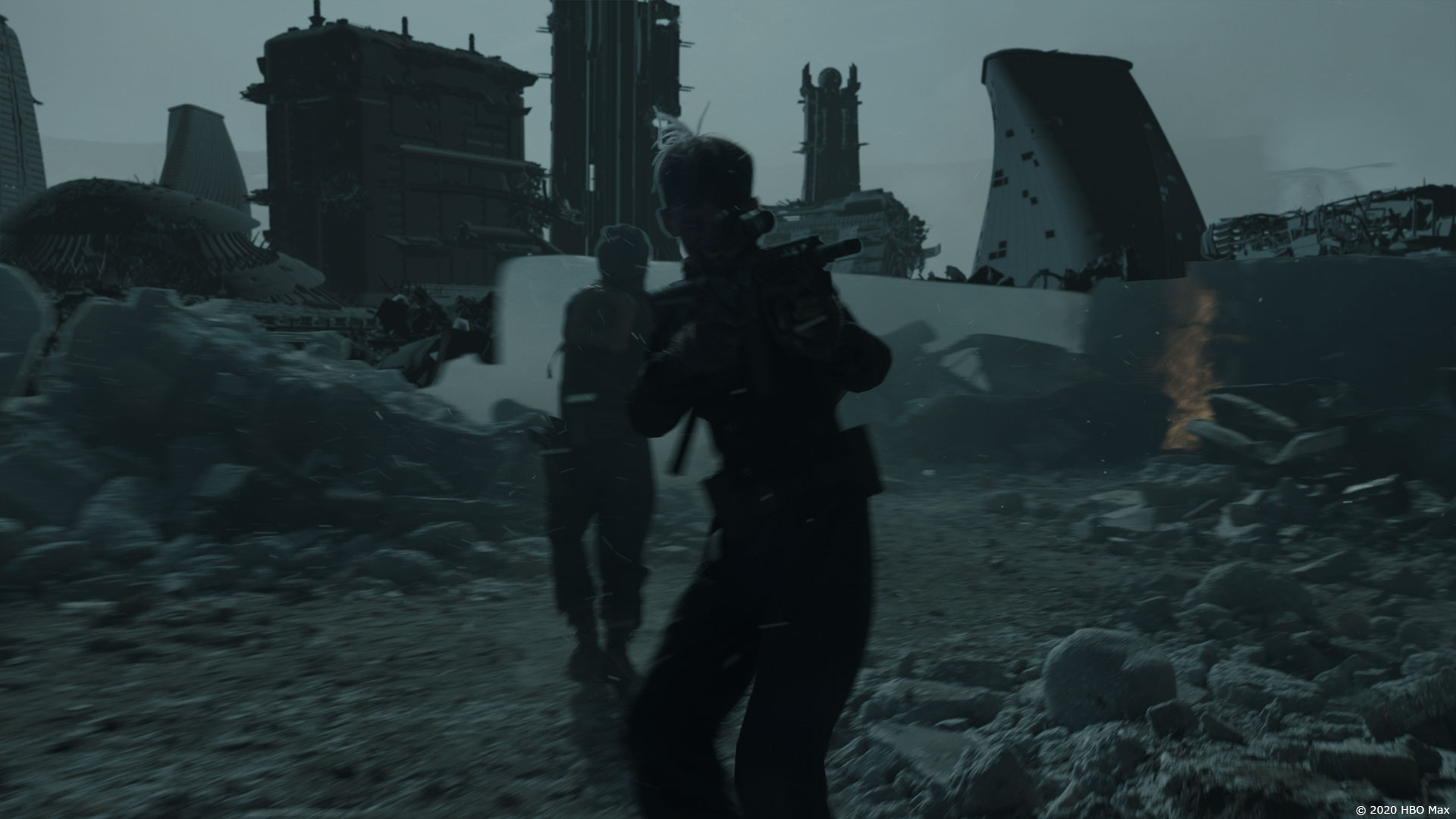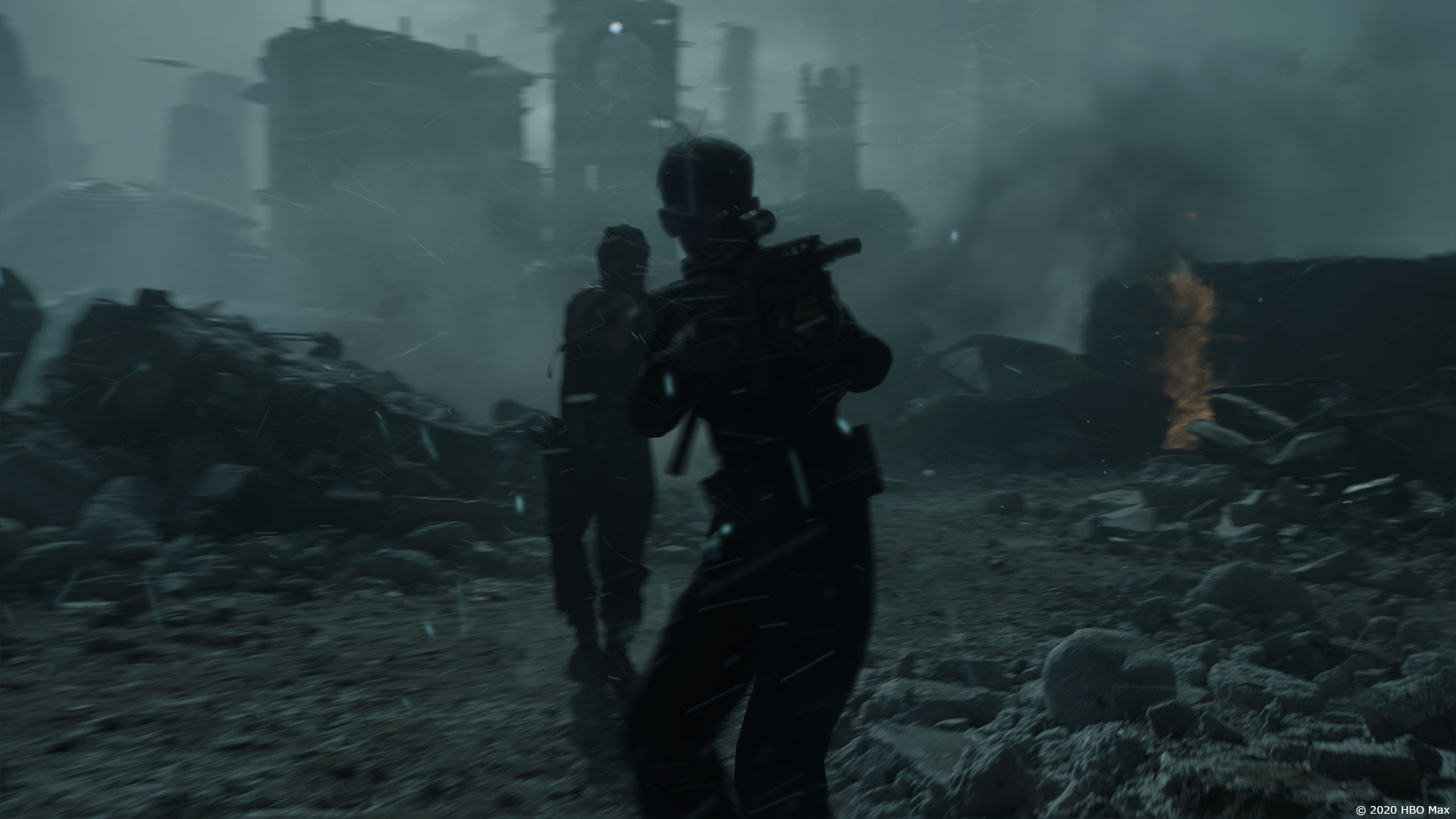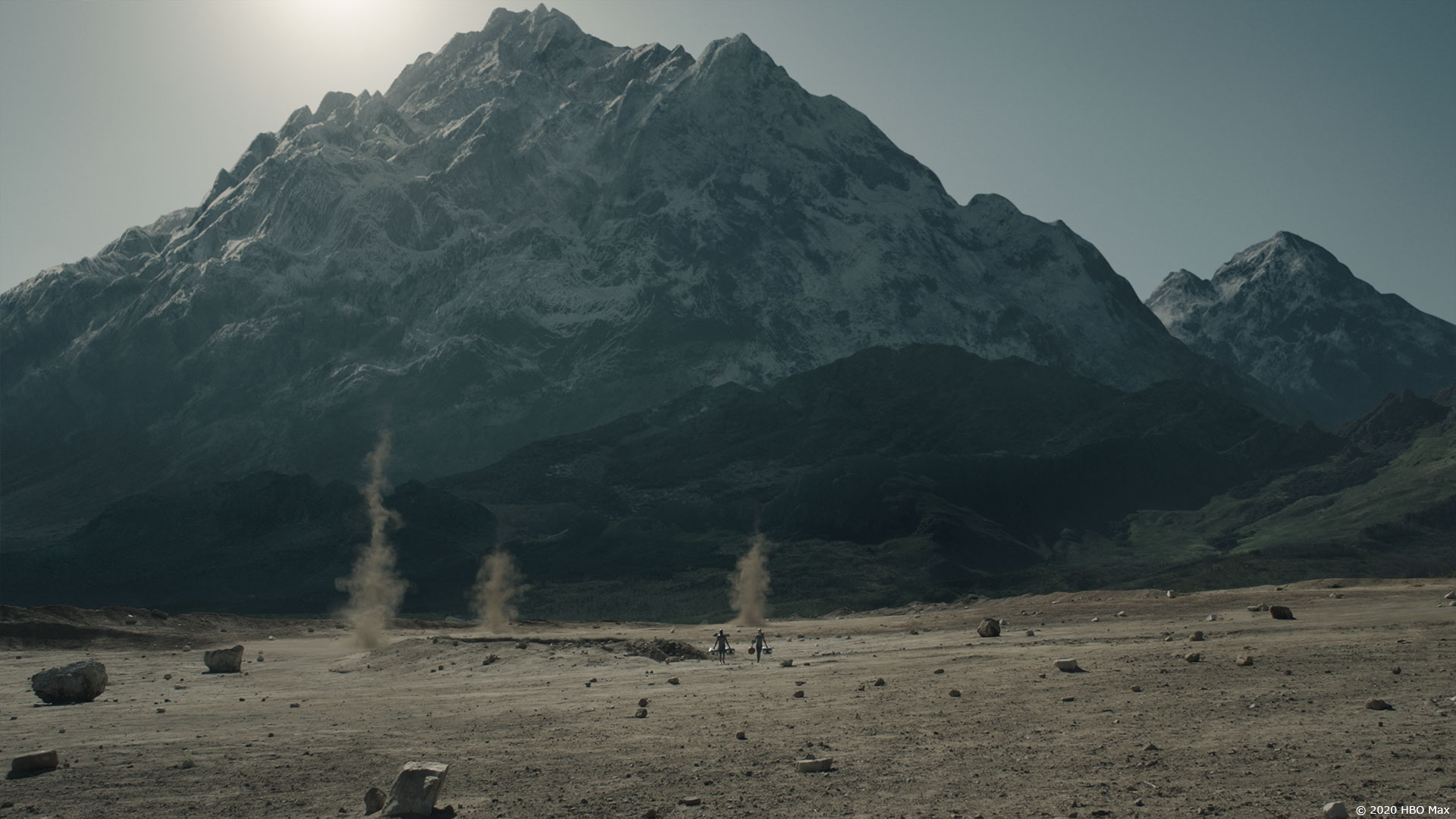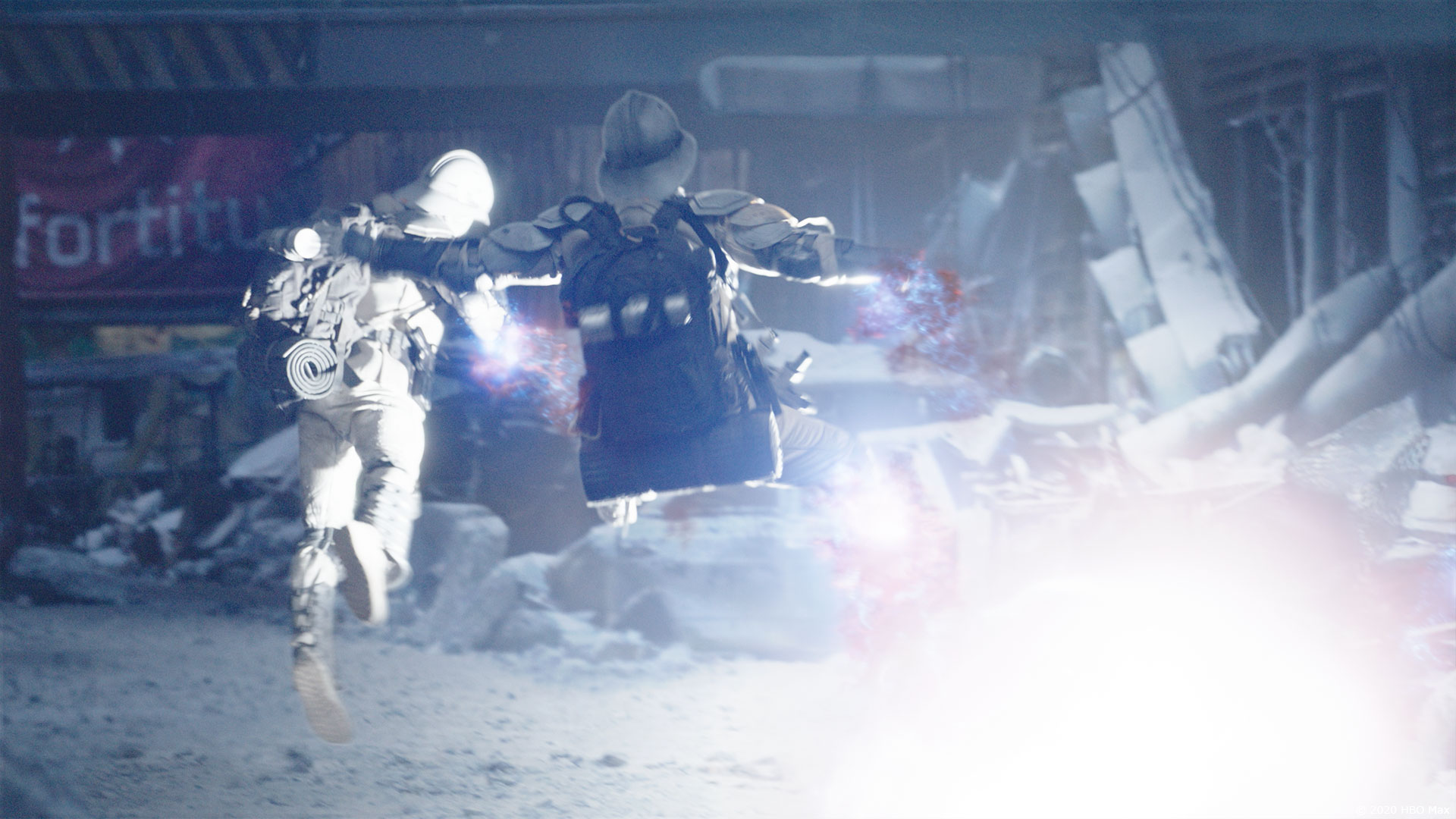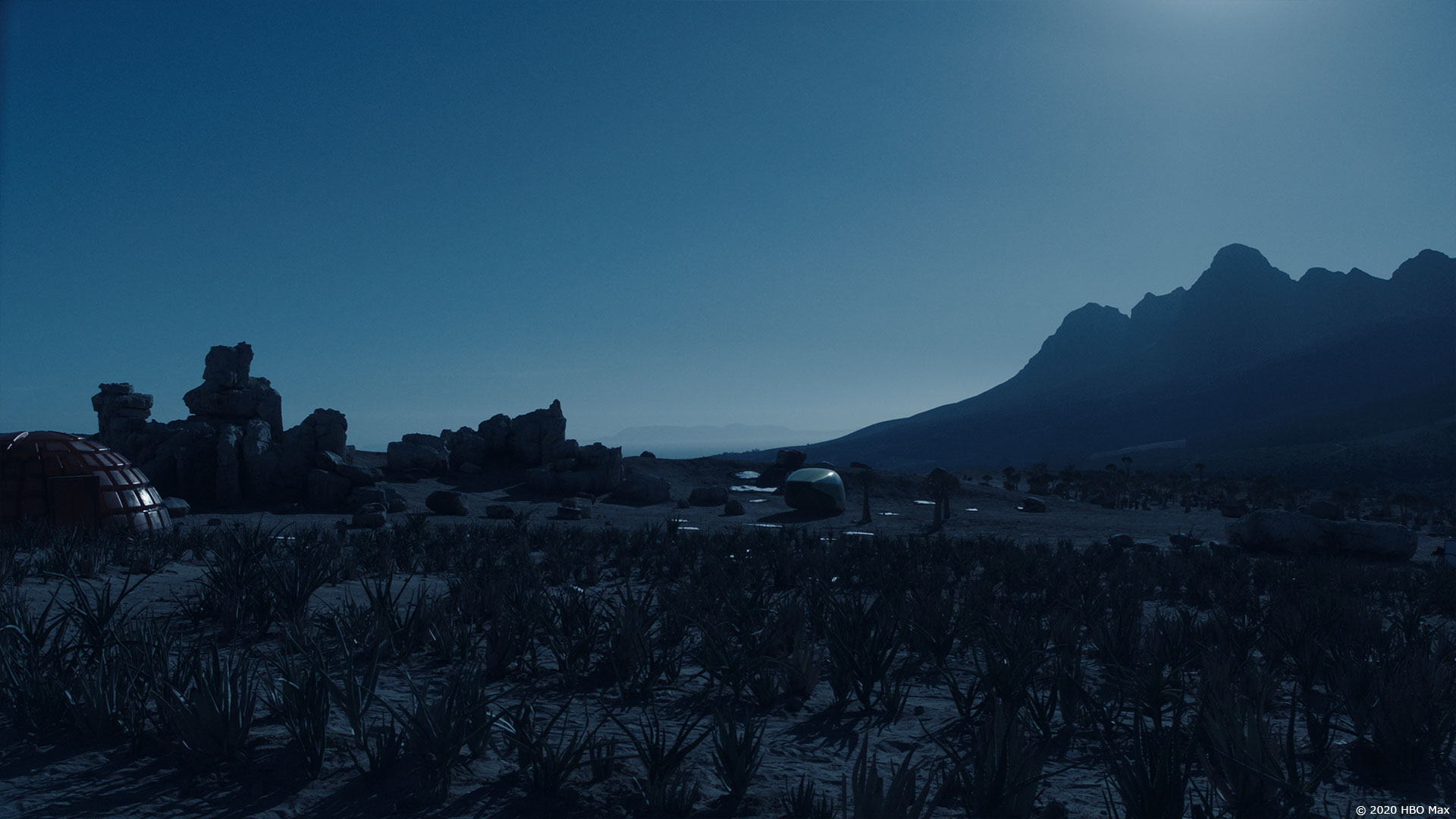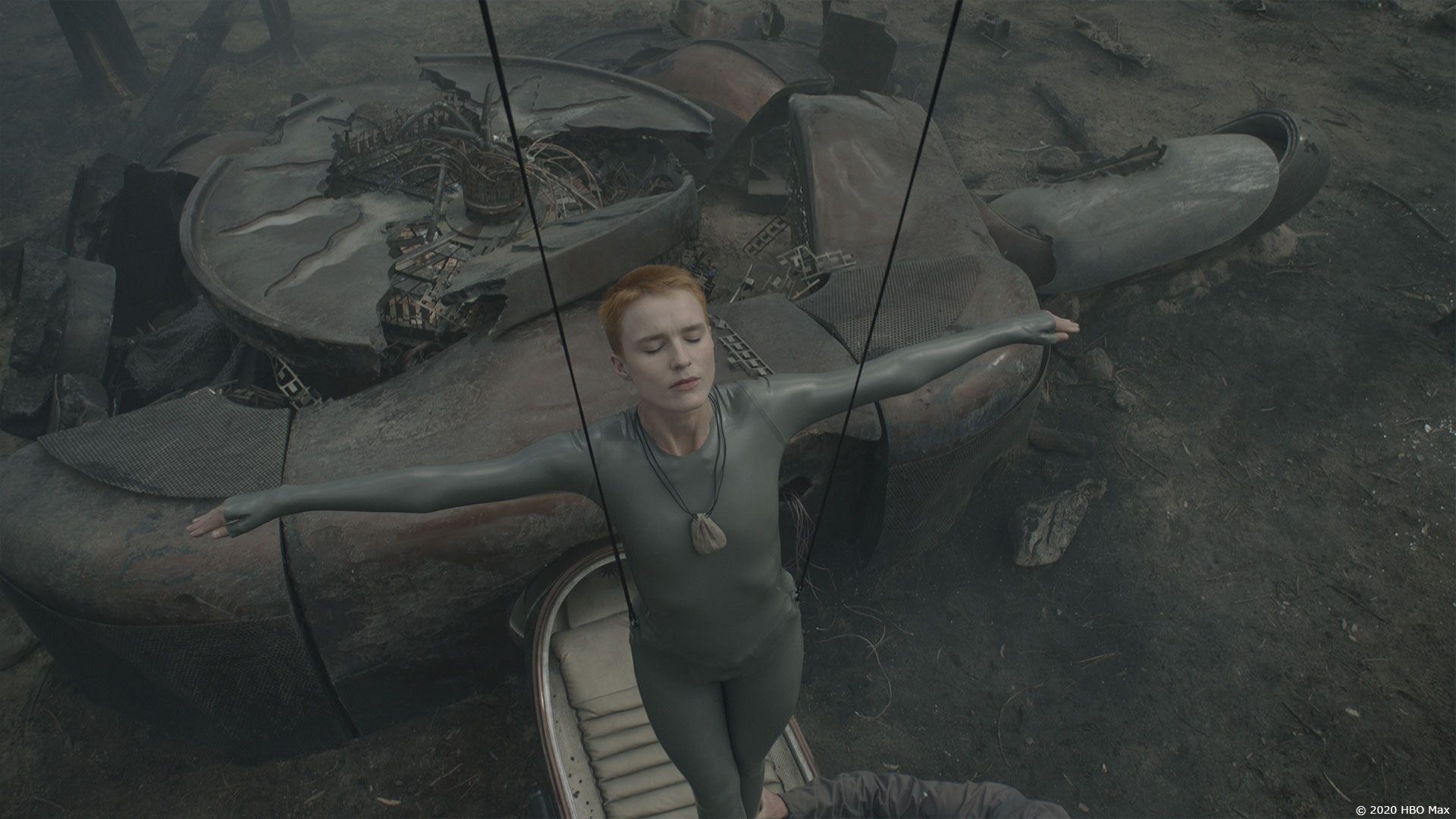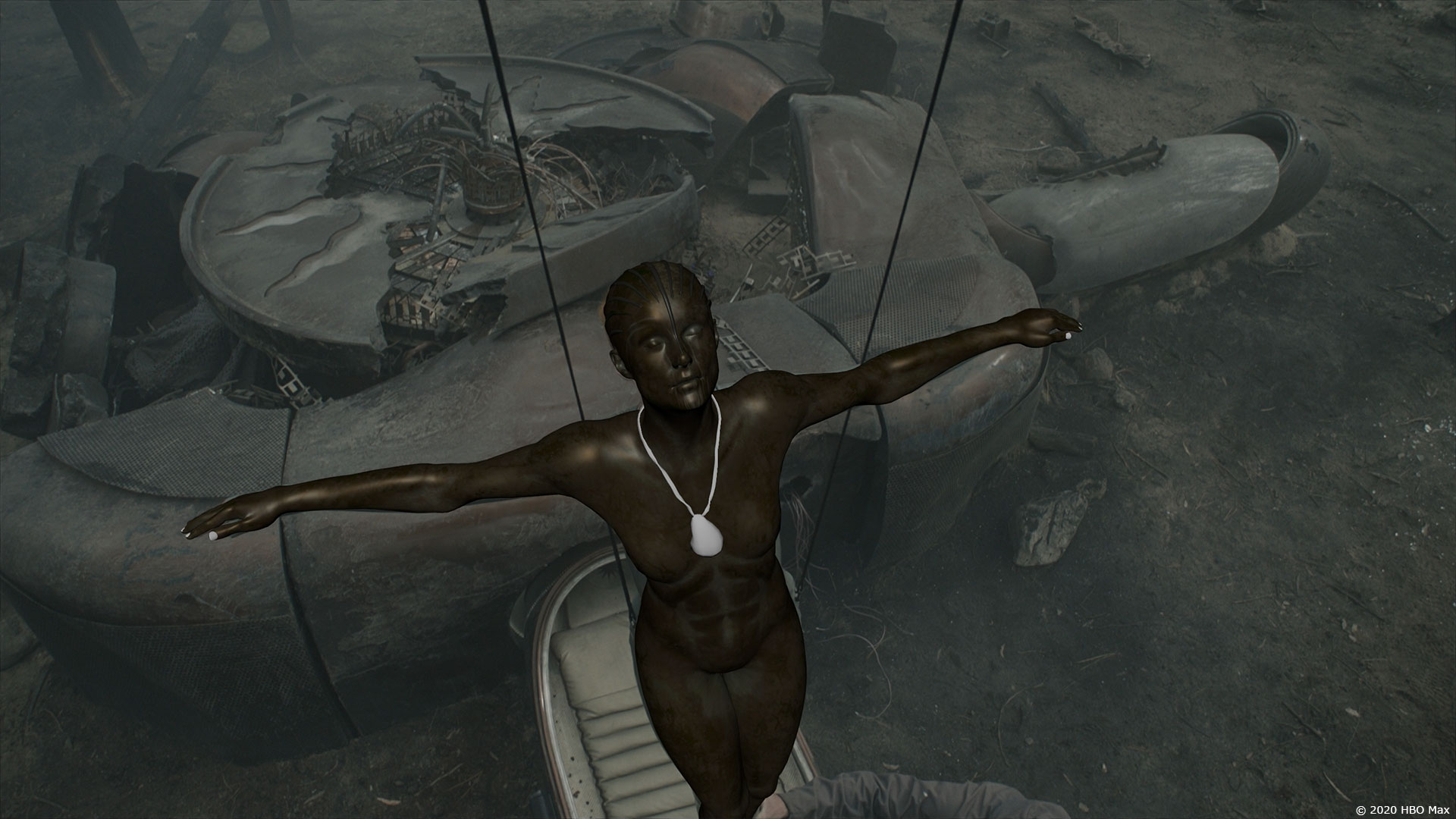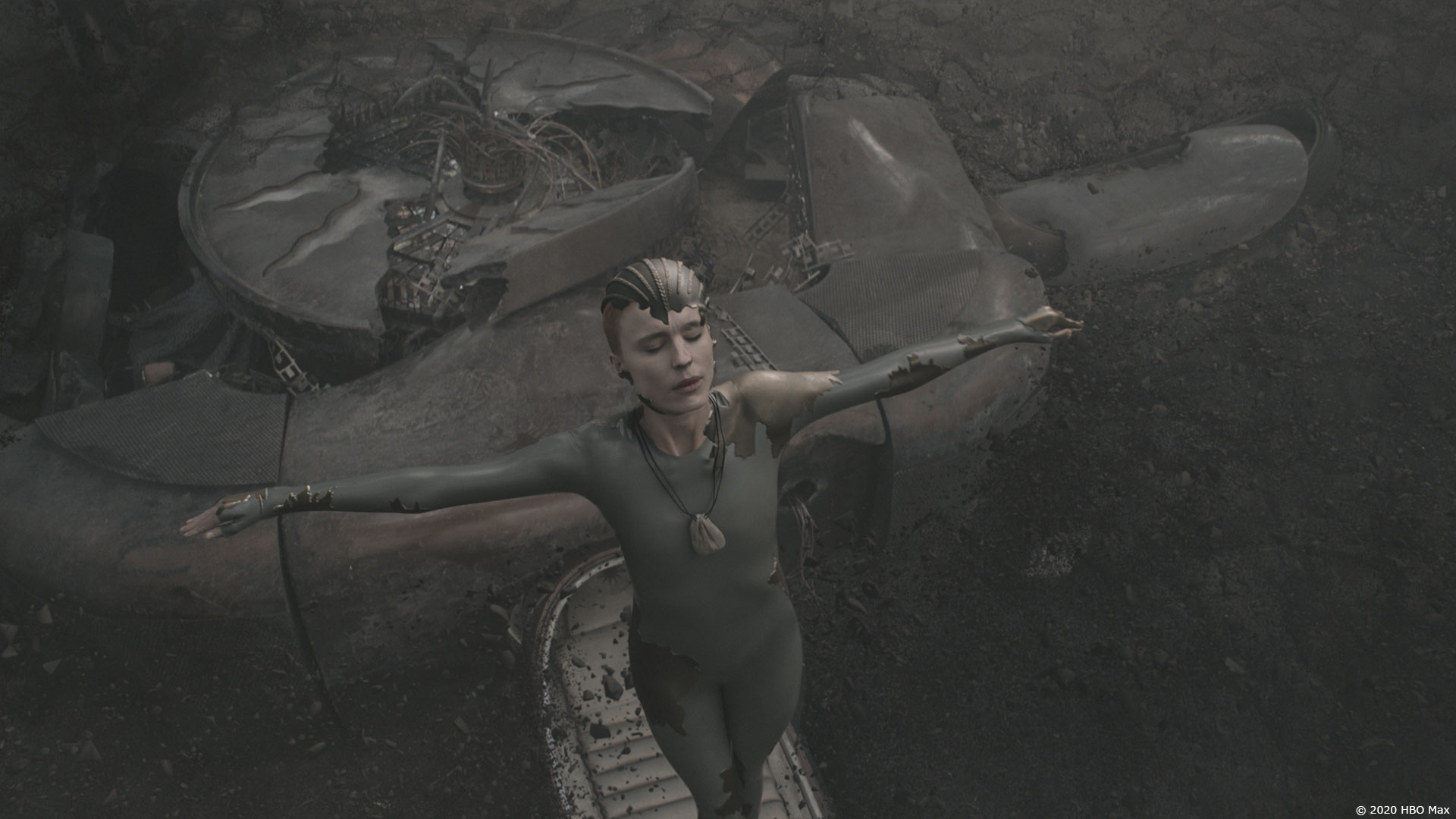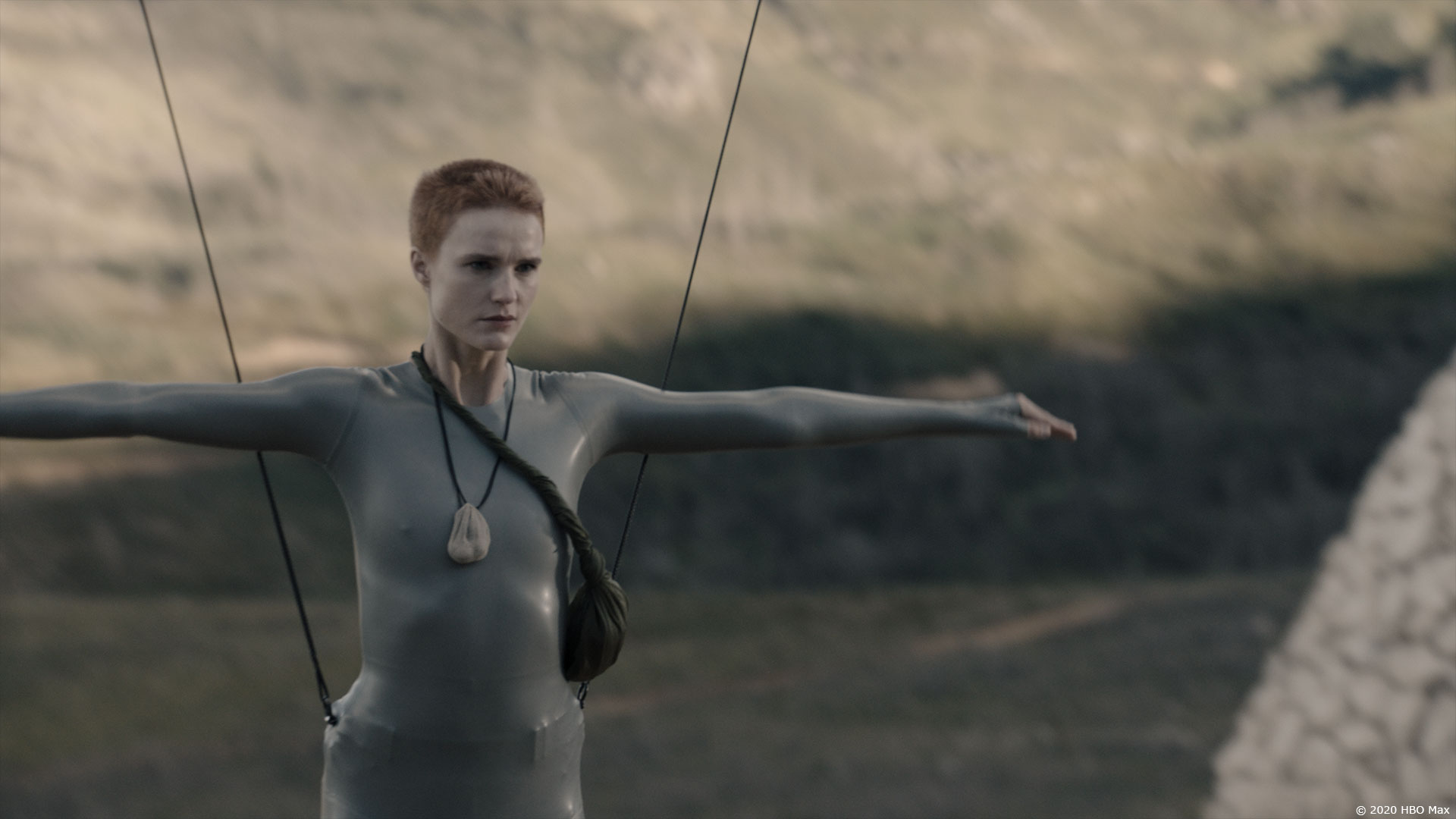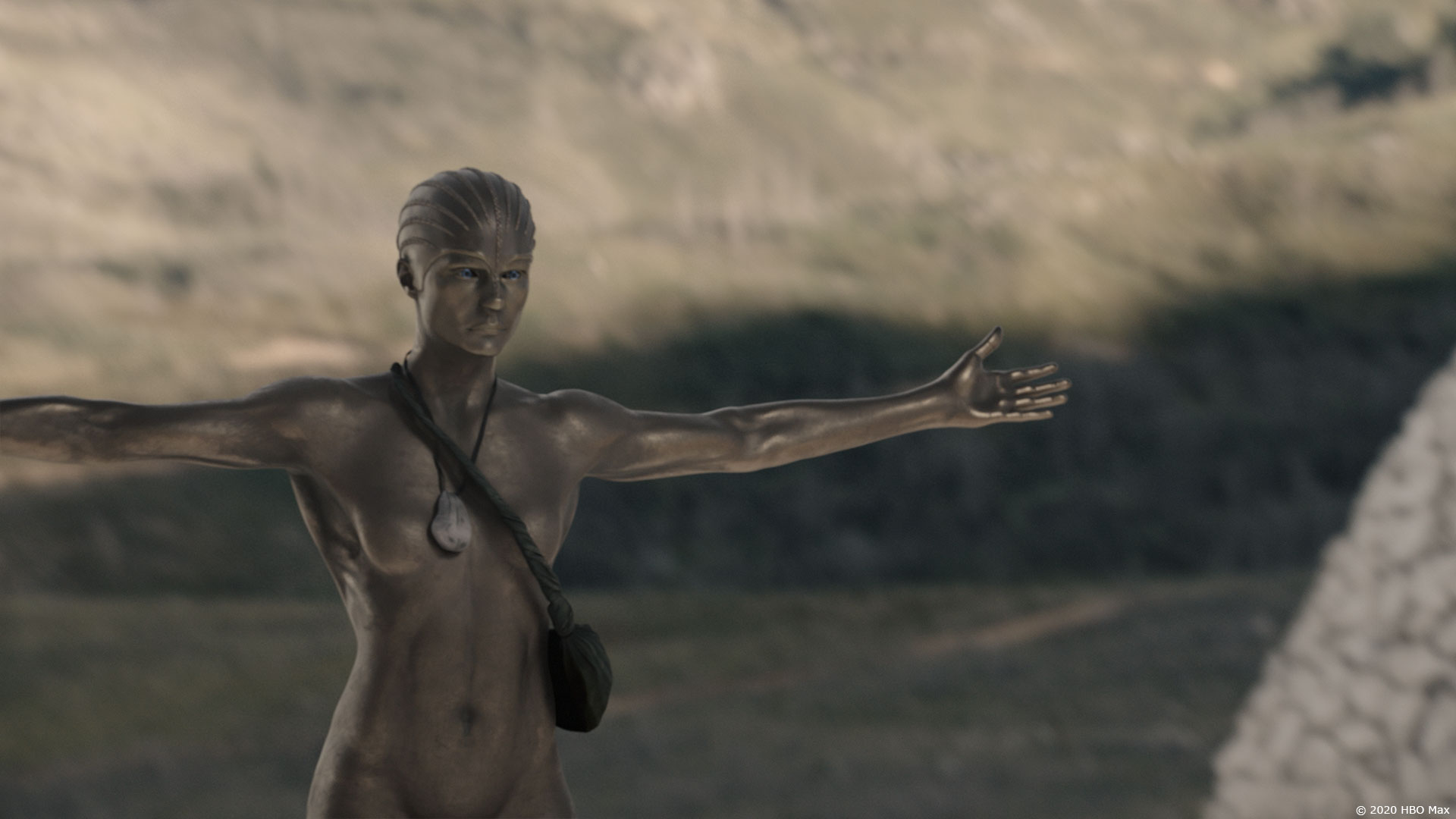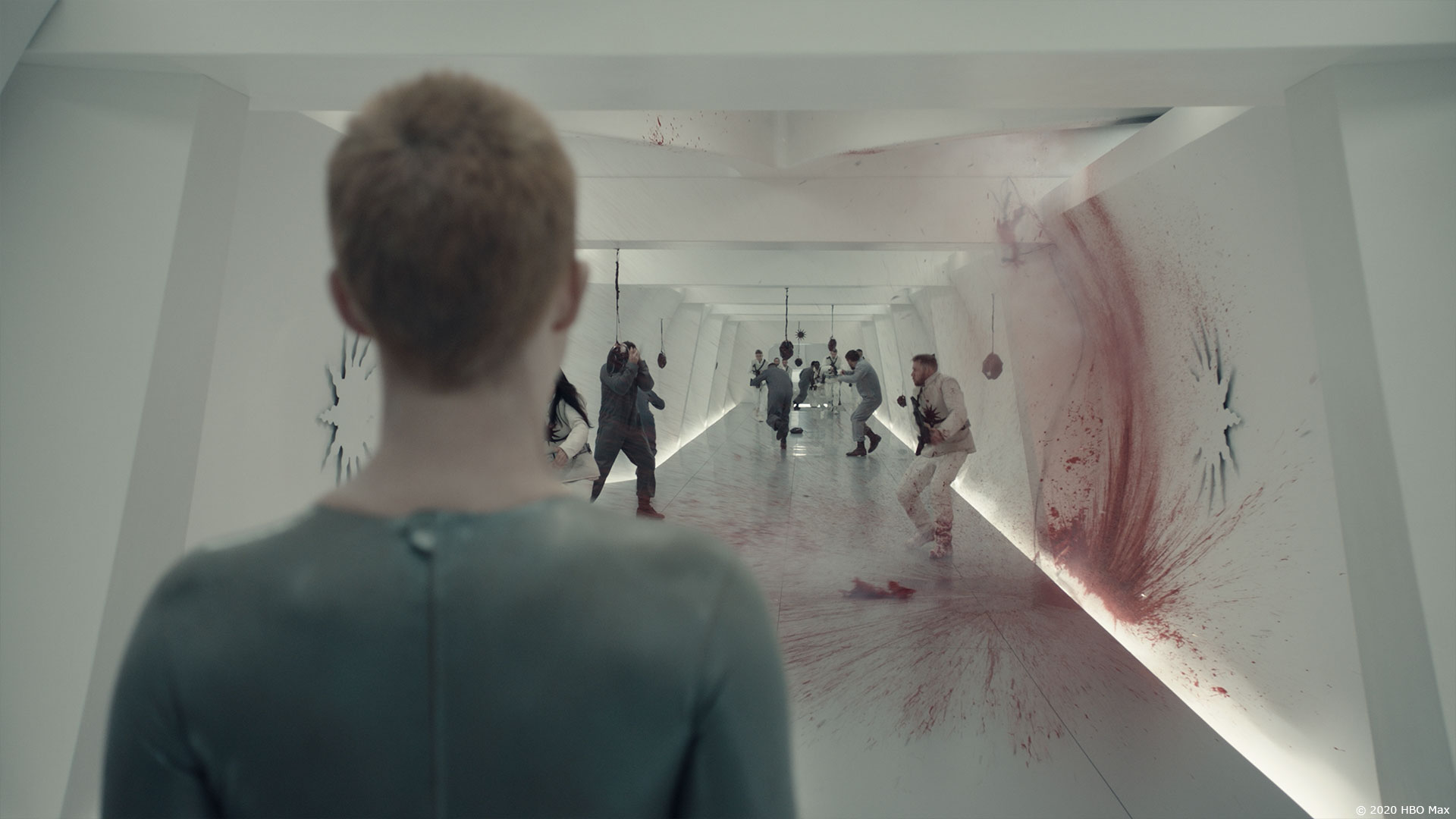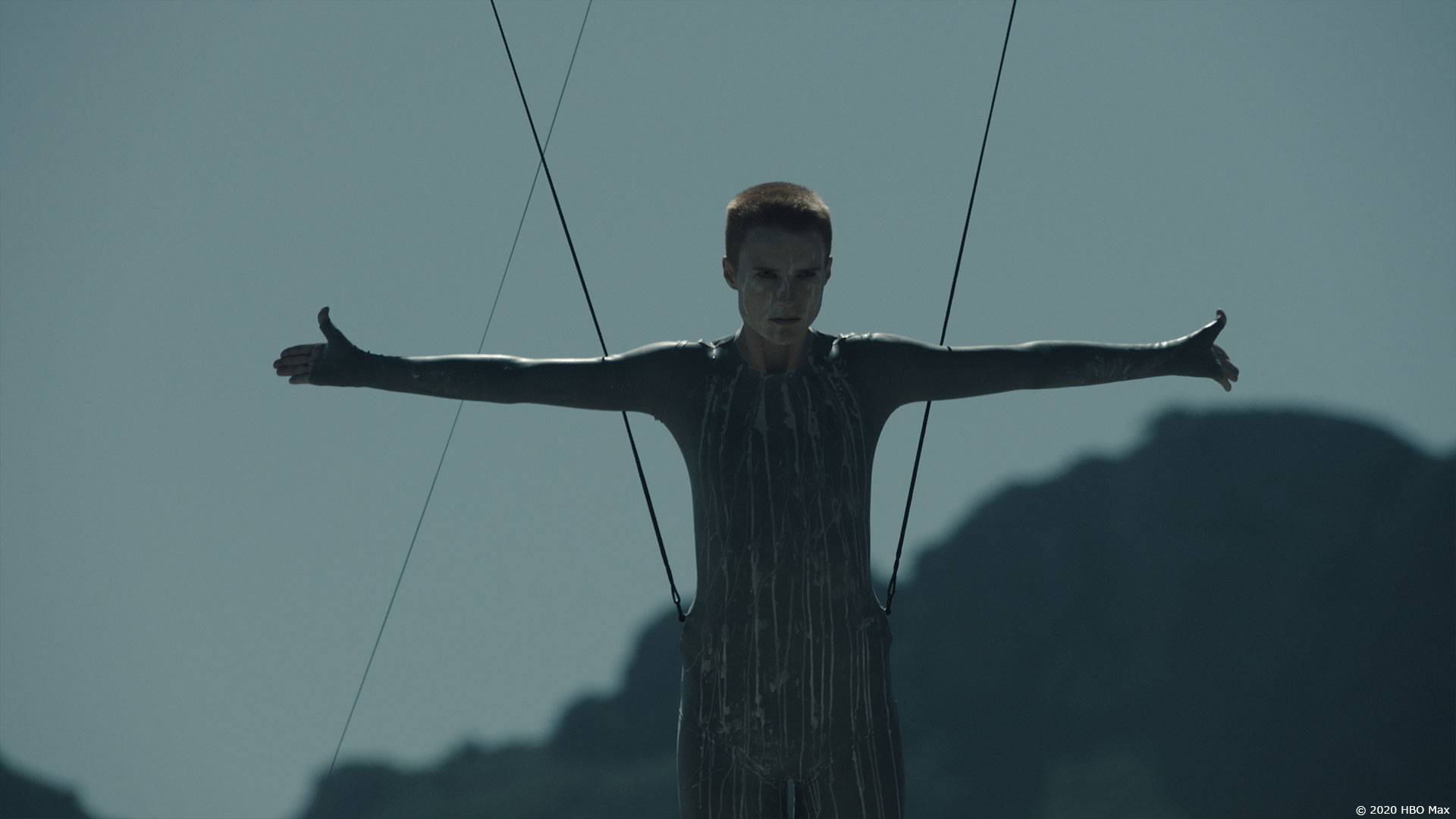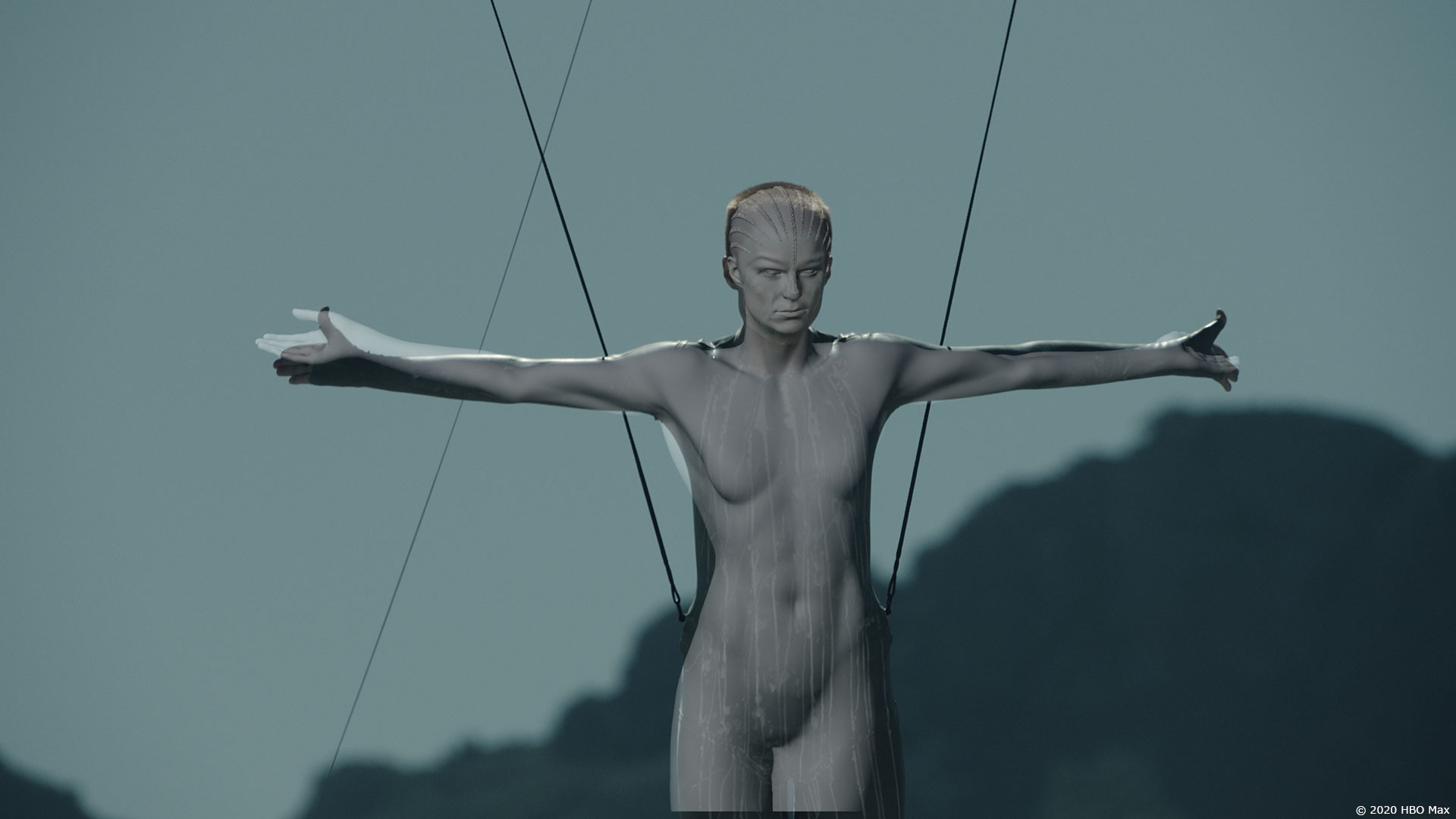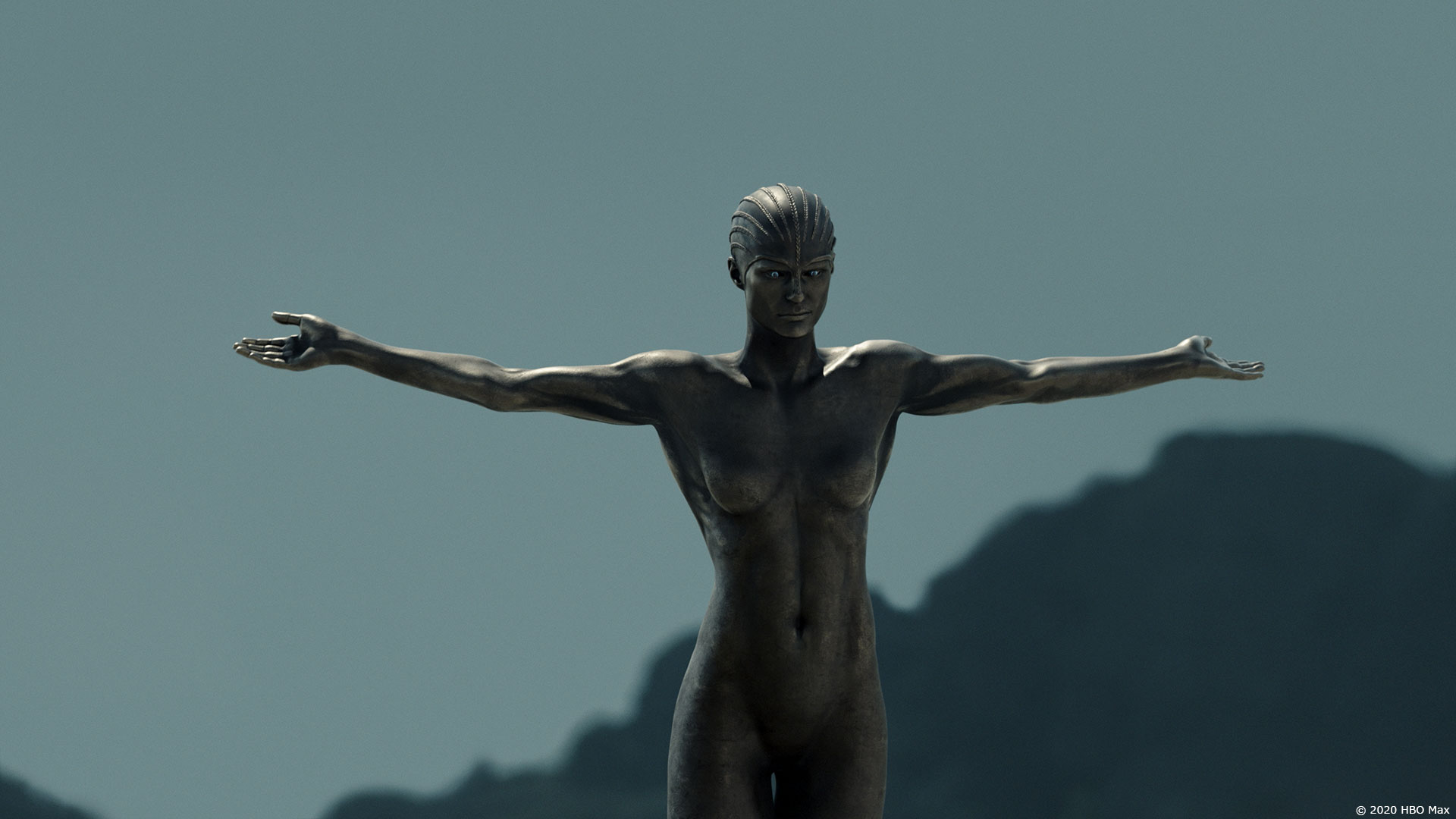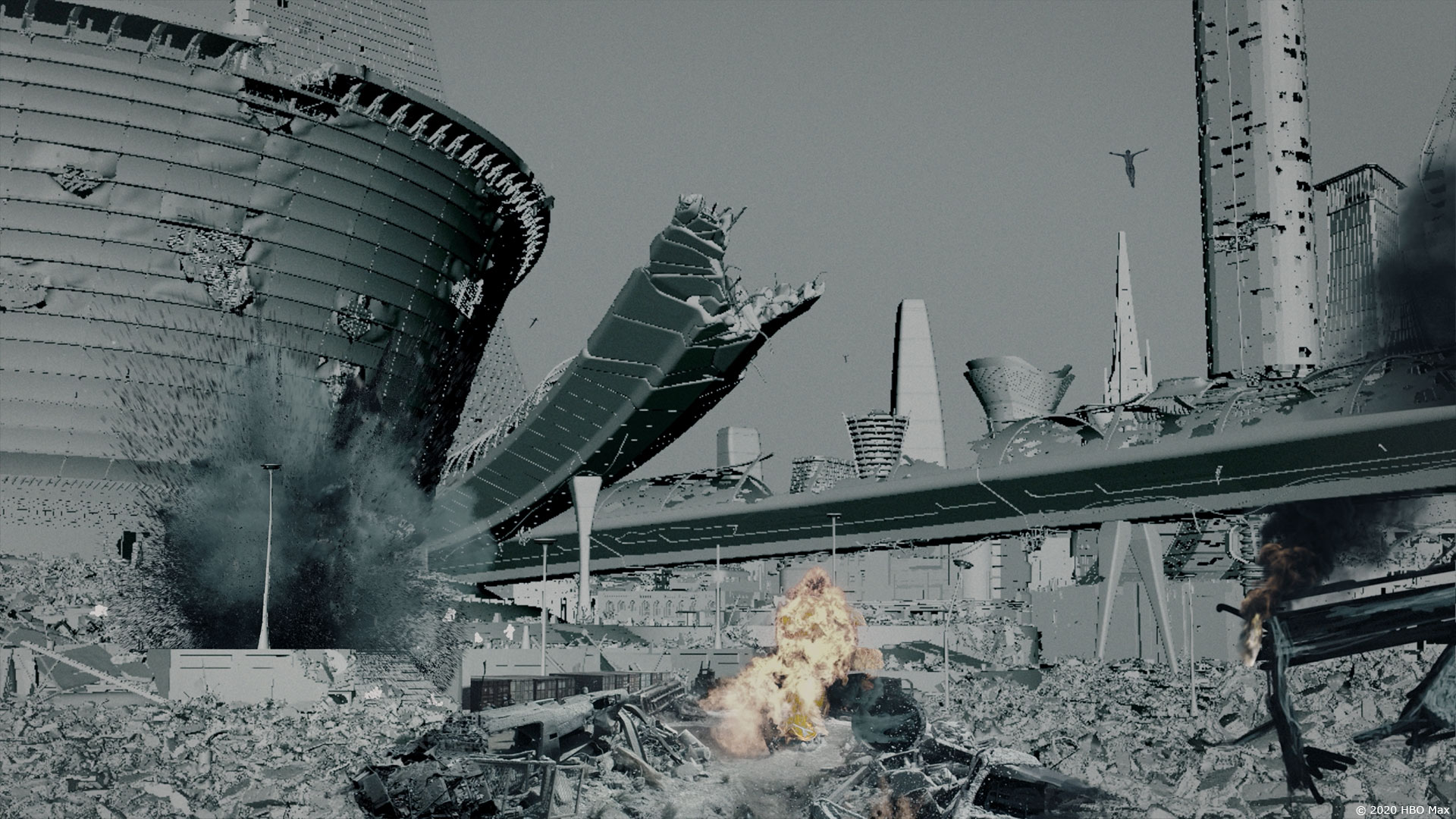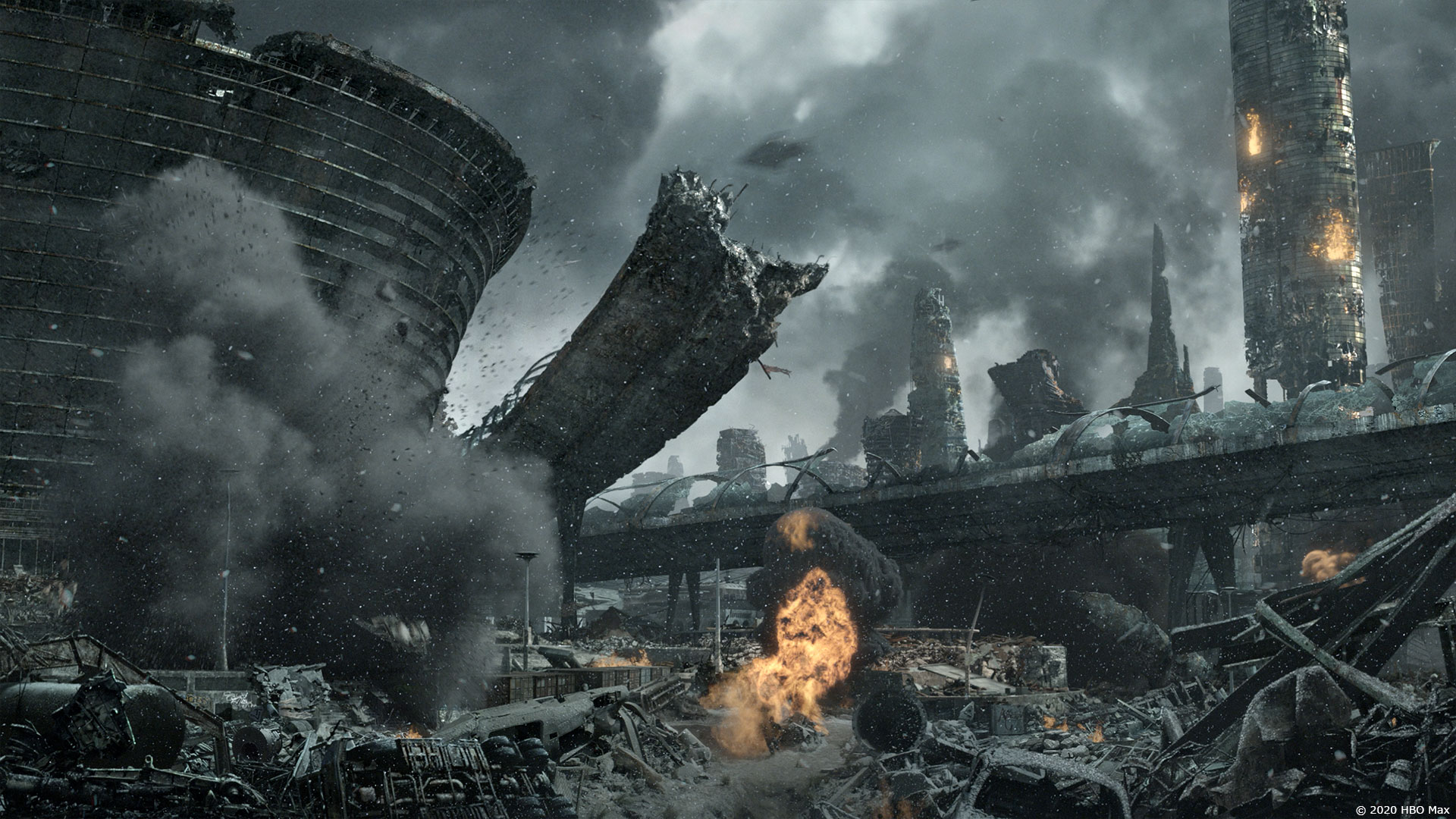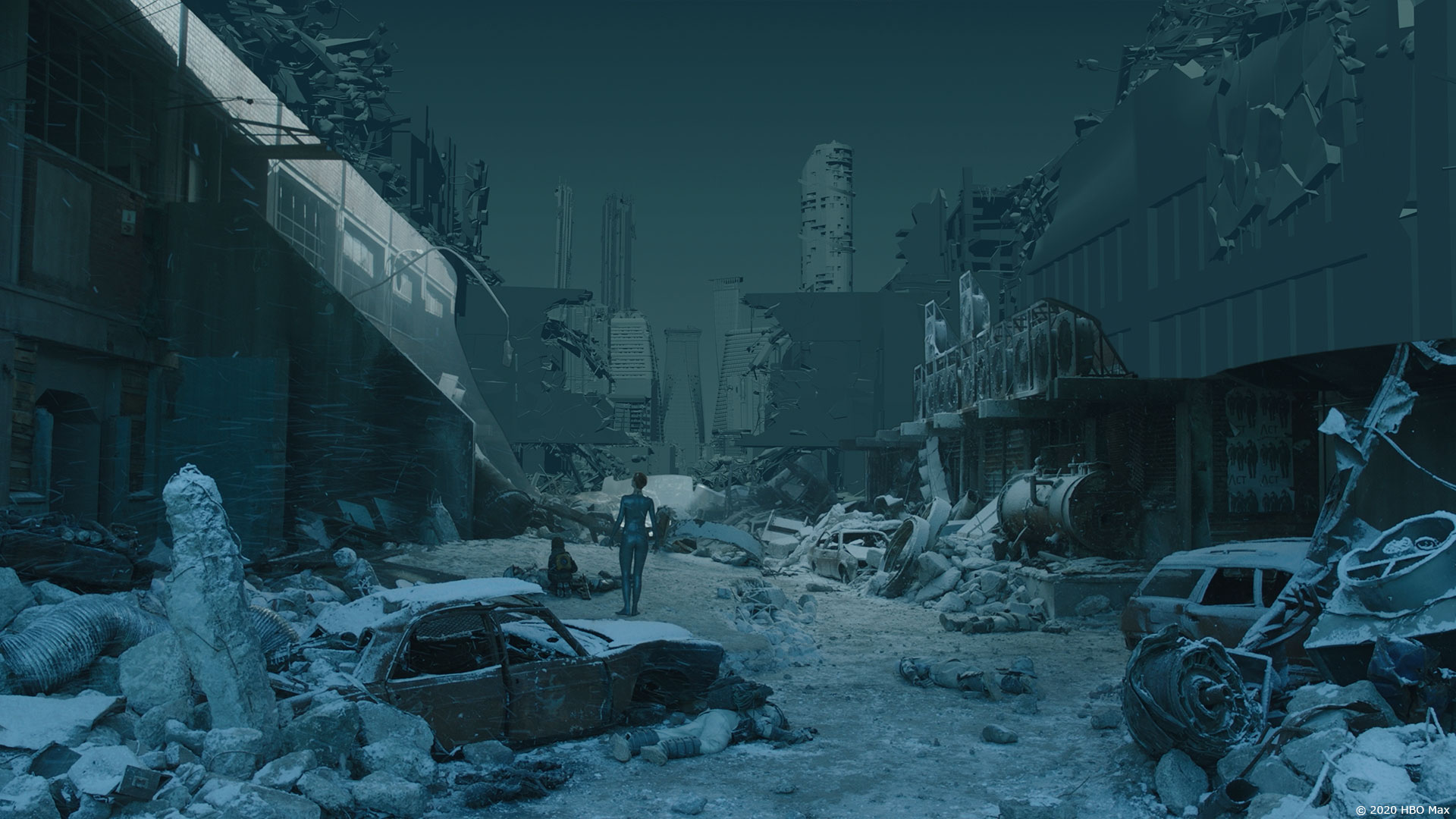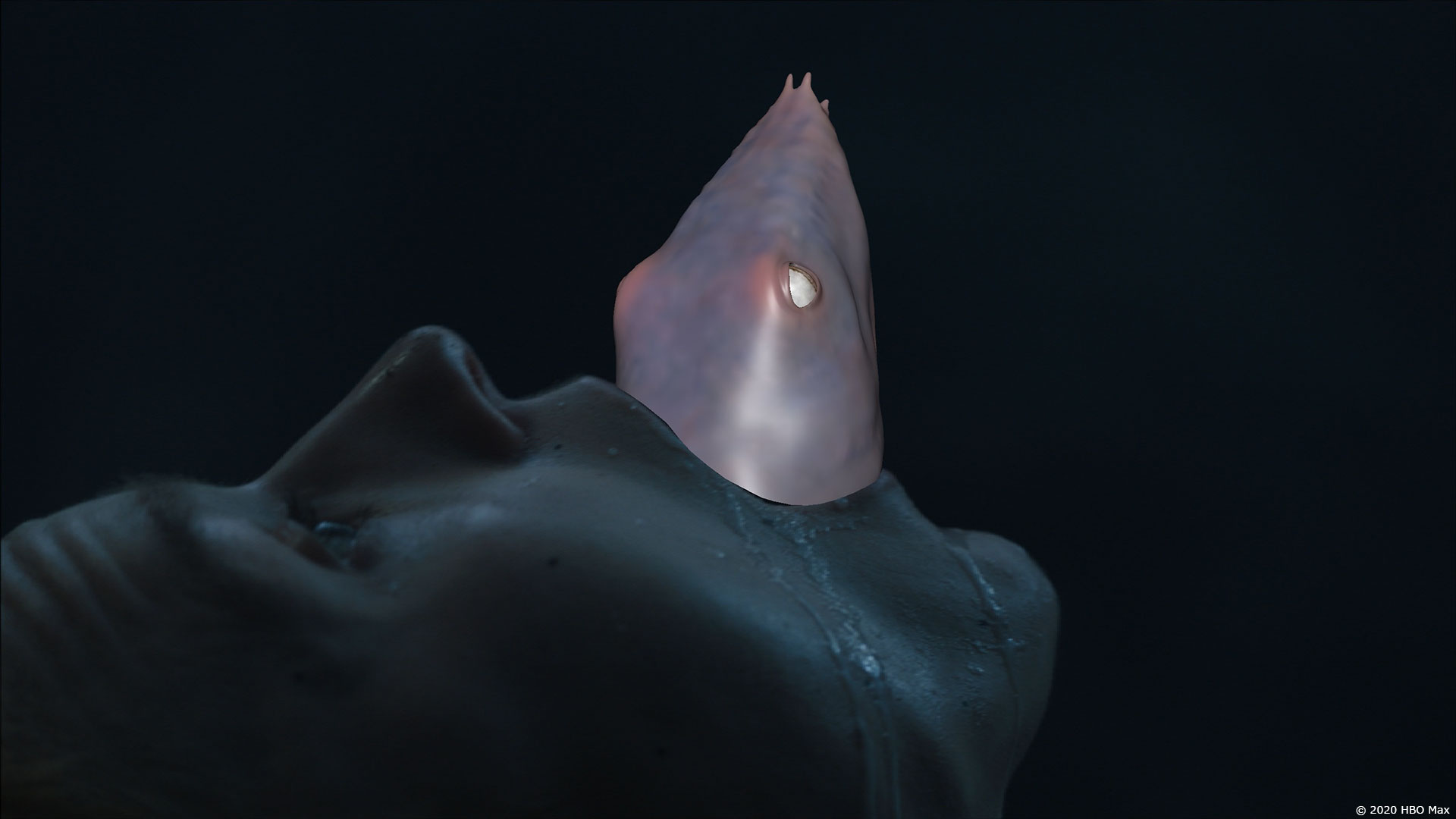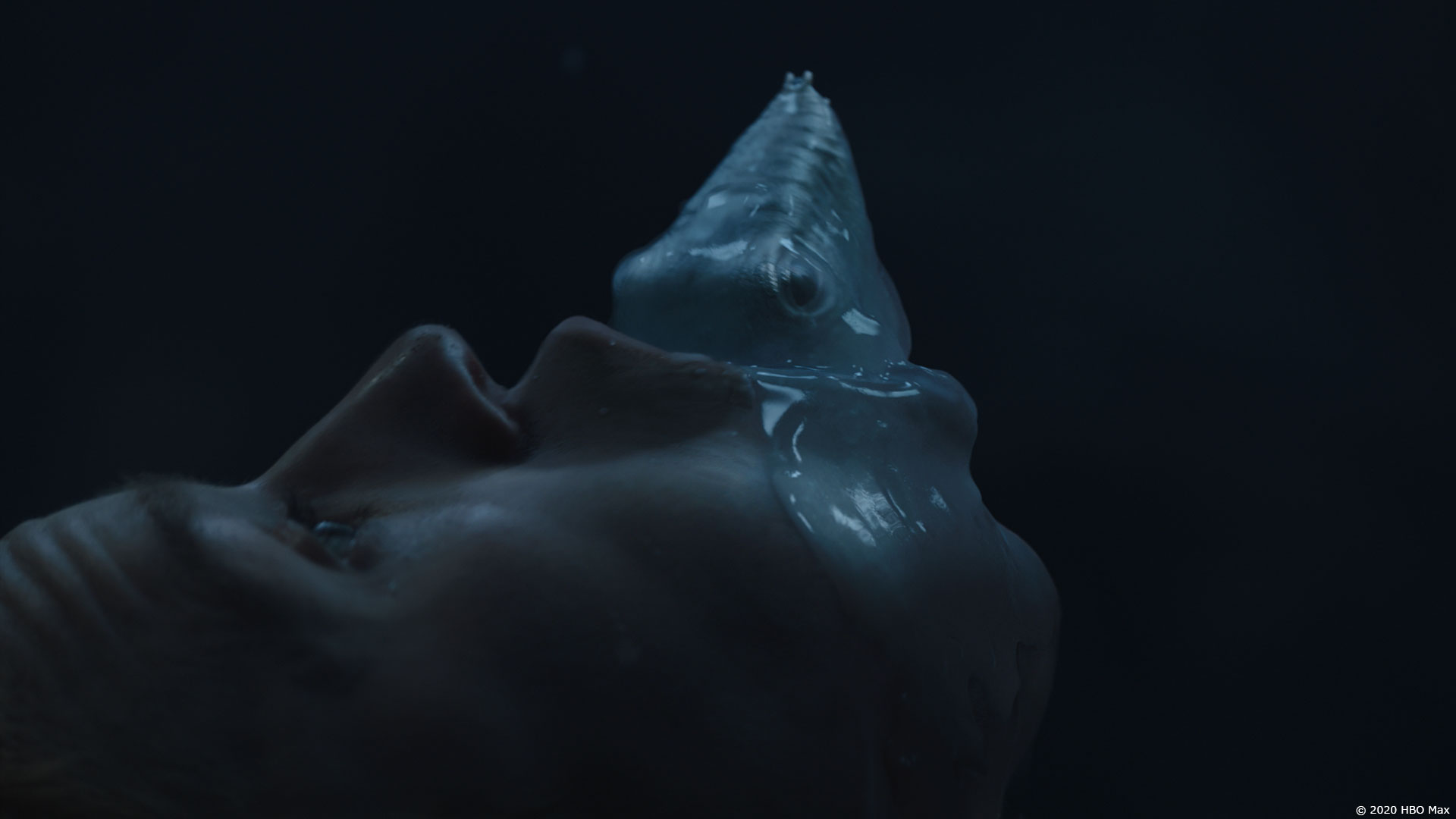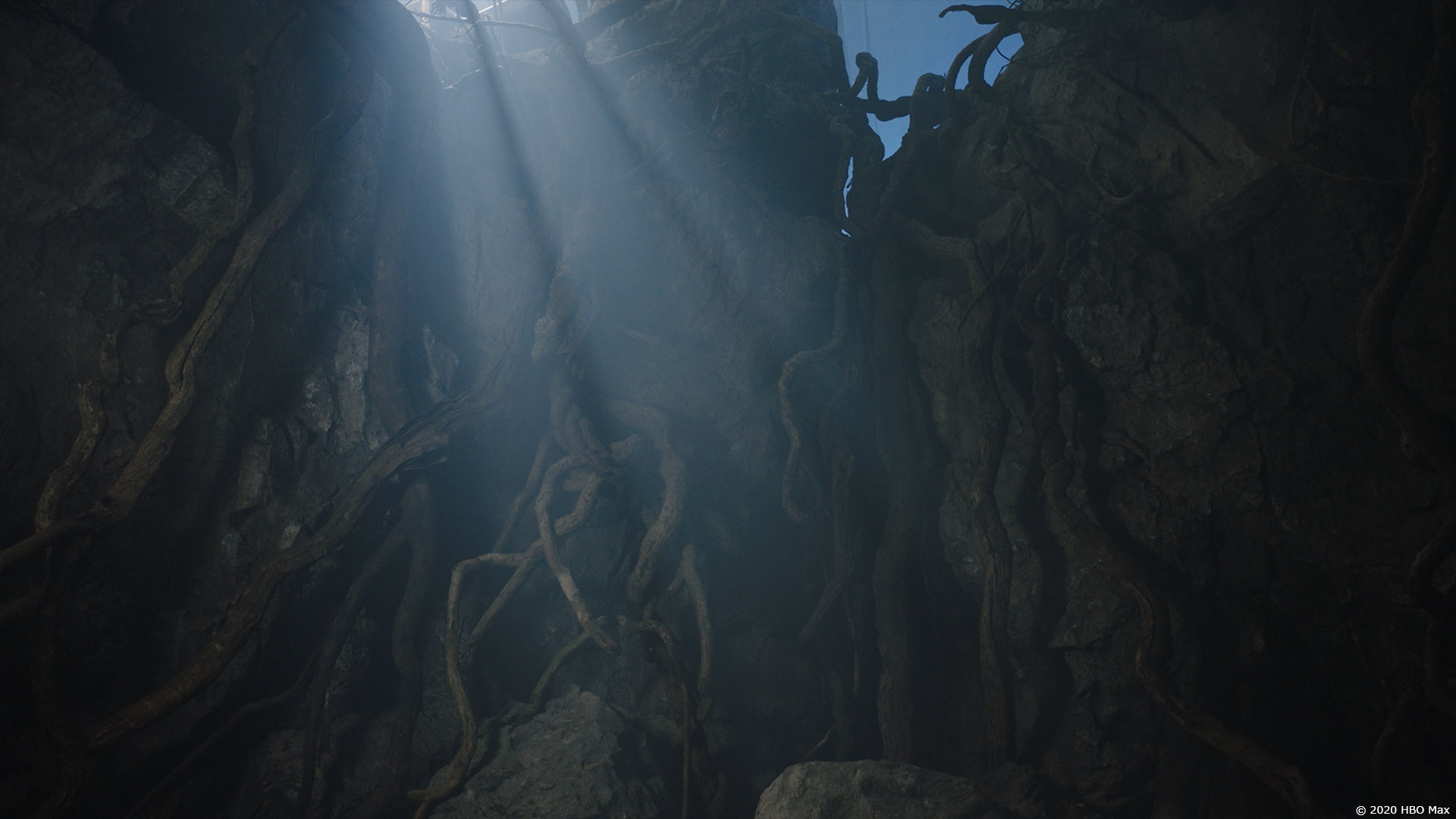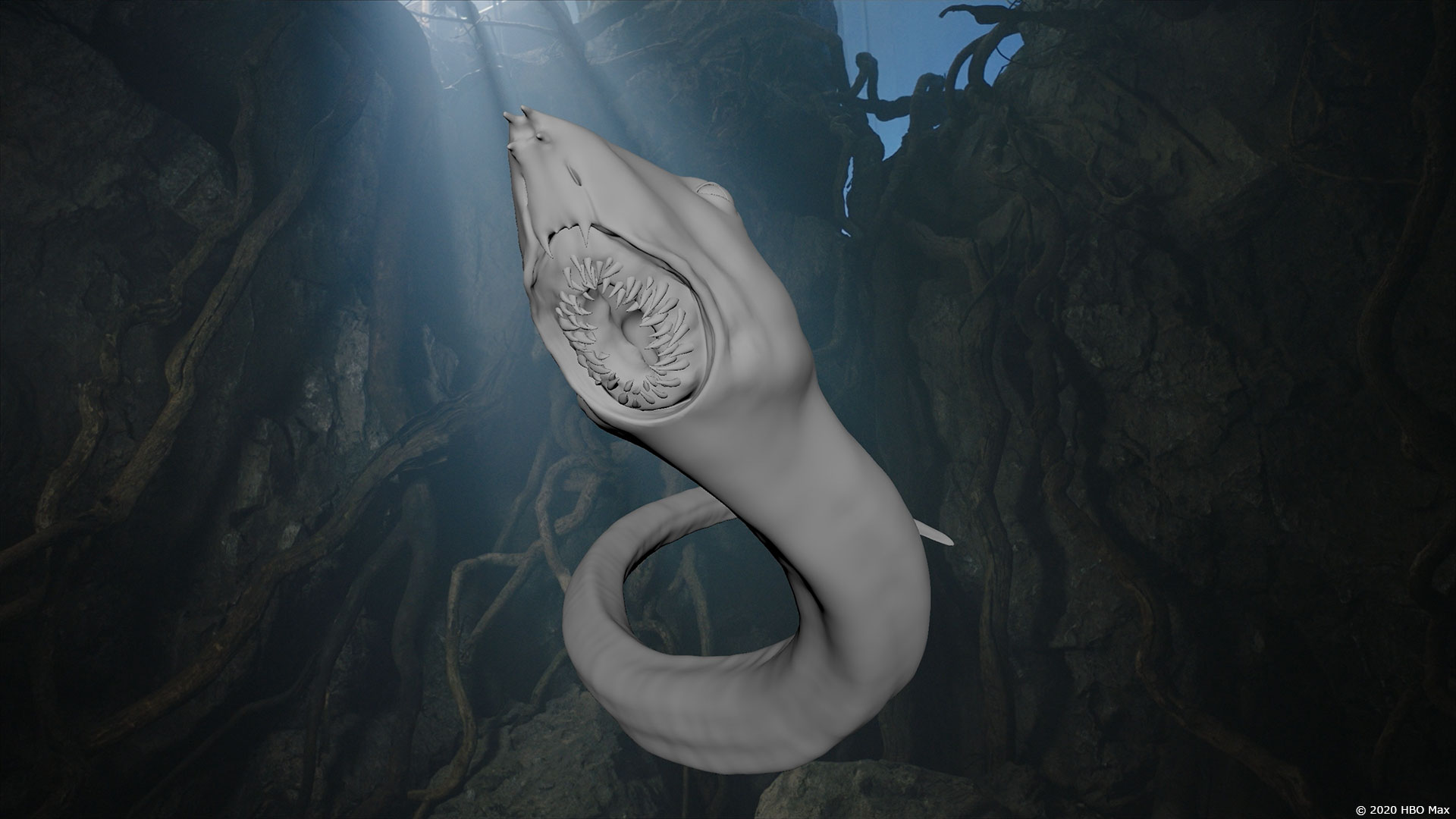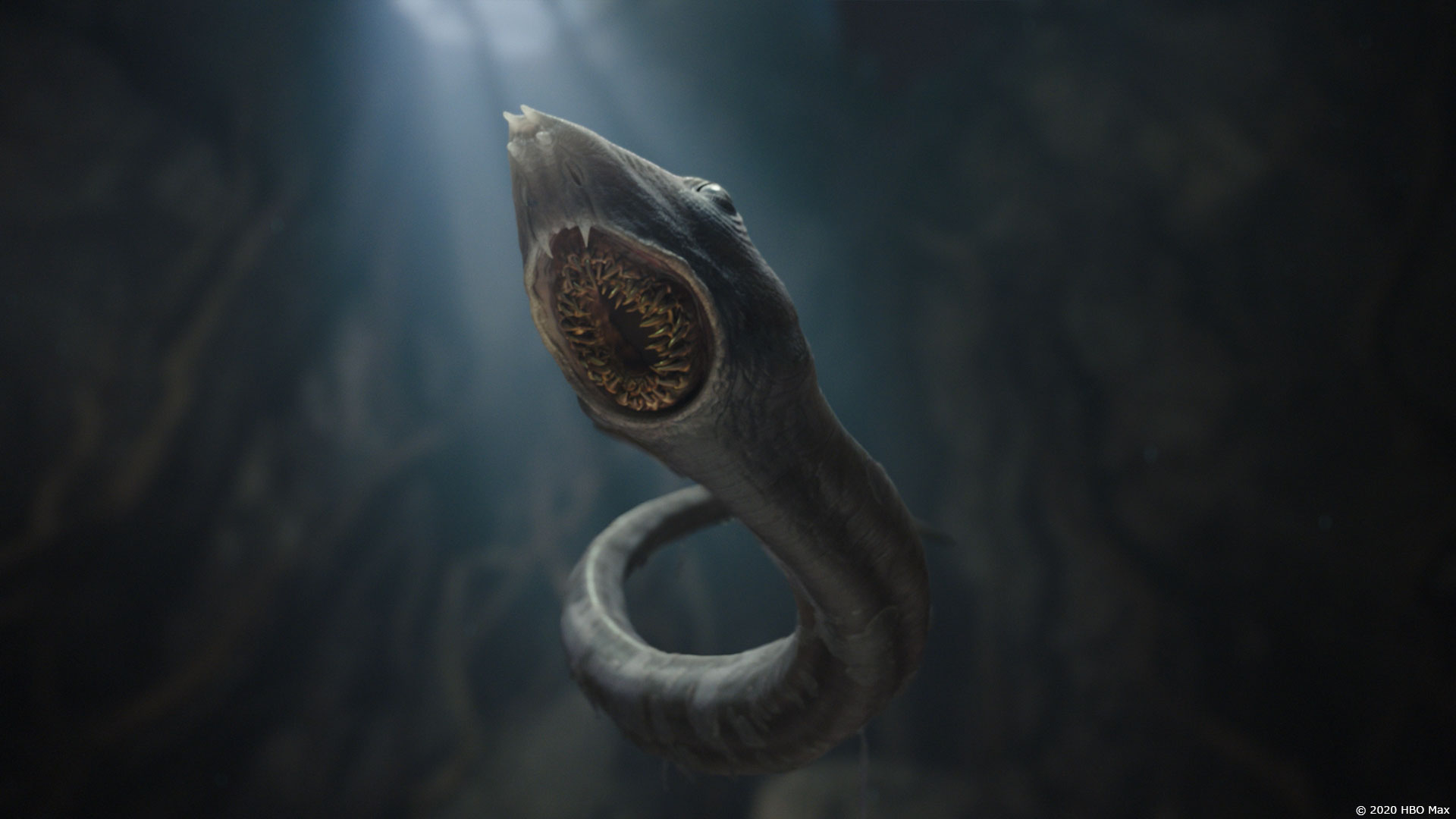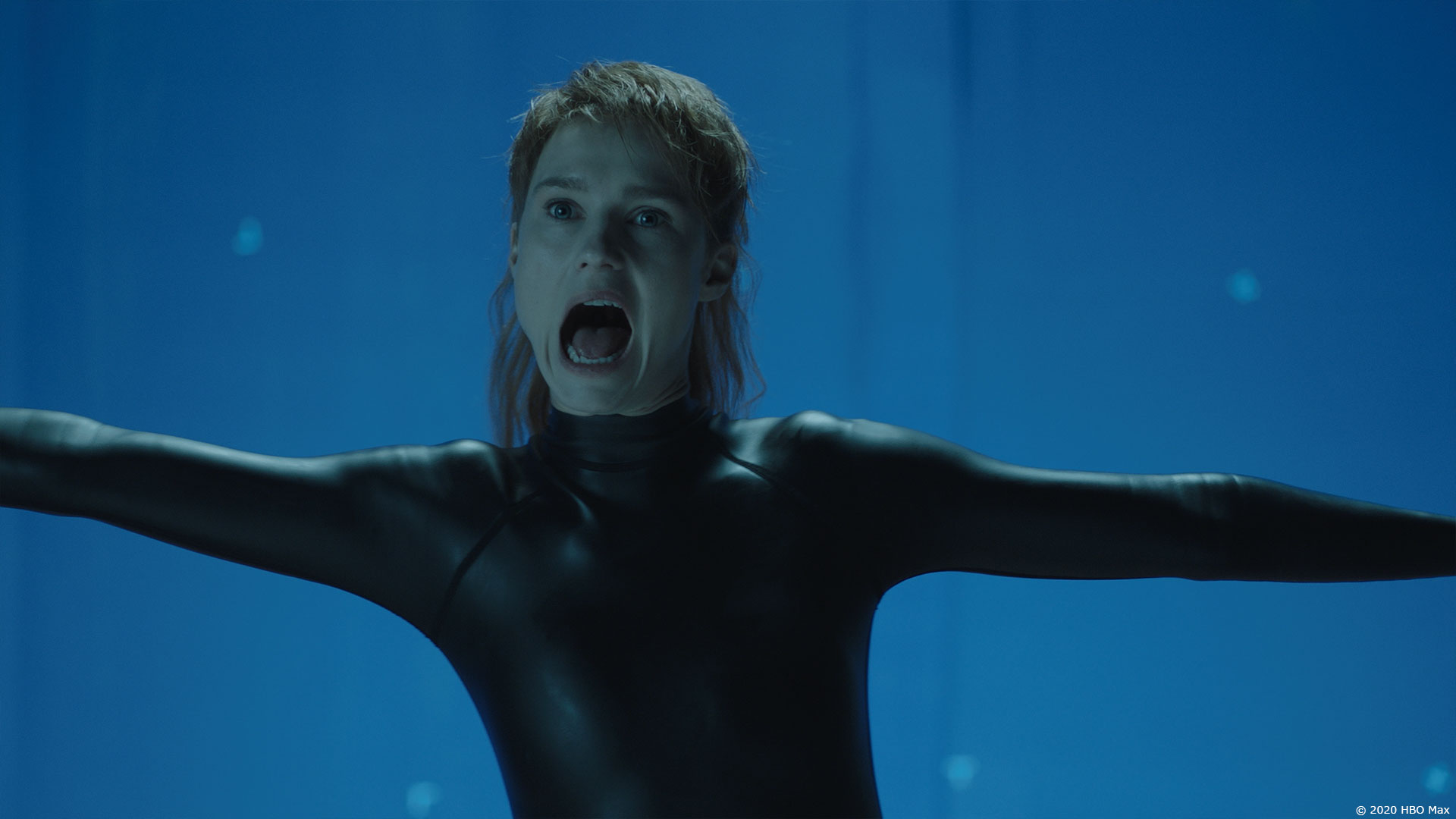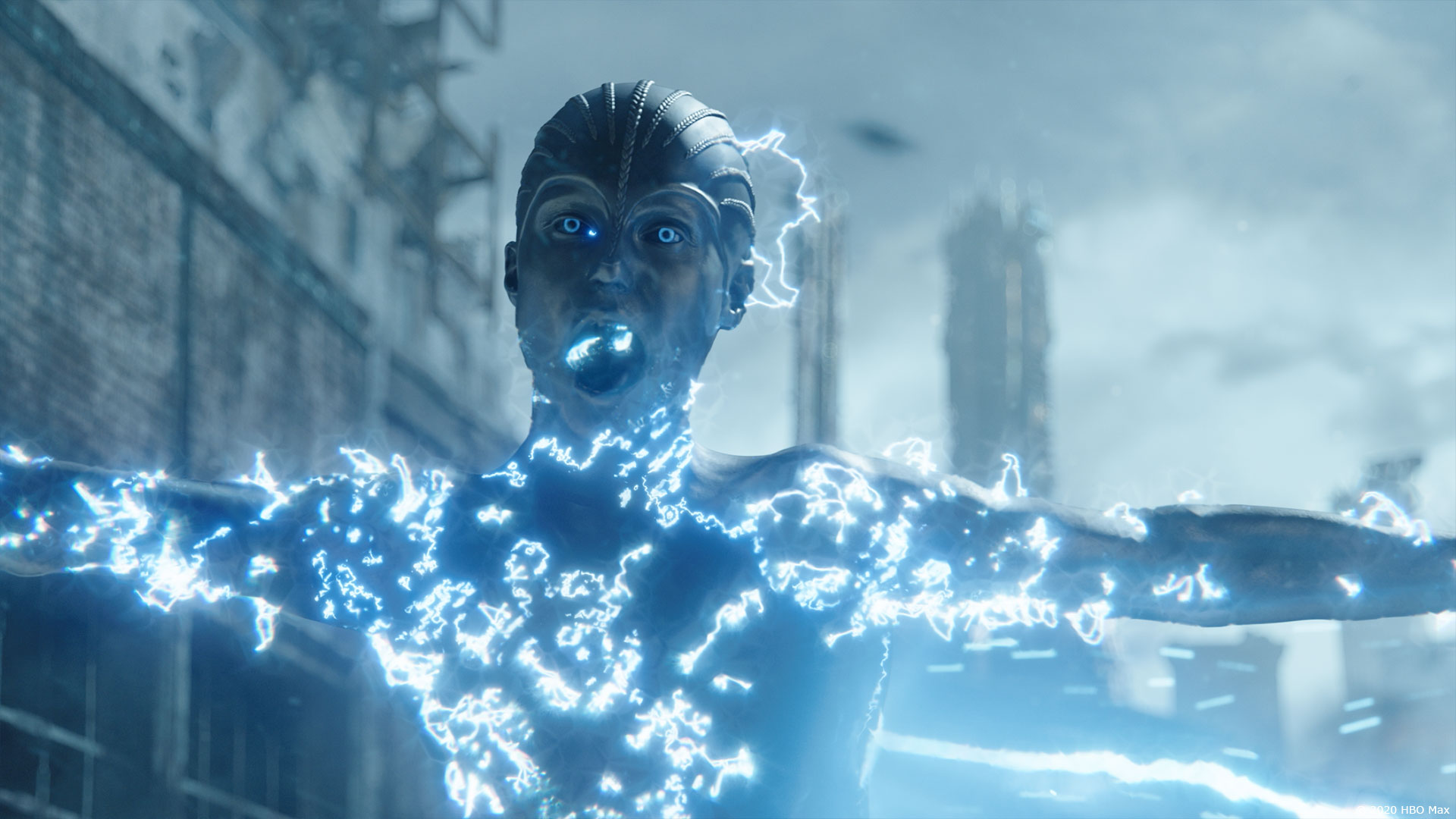Ray McIntyre Jr. has been working in visual effects for over 30 years! He has worked on various shows including LIVE FREE OR DIE HARD, LOOPER, AFTER EARTH and RIM OF THE WORLD. He talks to us today about his work on HBO Max‘s science fiction series, RAISED BY WOLVES.
What is your background?
I learned about the film business in summer jobs while in high school and university. I earned a degree in engineering in the 1980’s and wrote computer software. I made the switch to the visual effects business in 1989. At this time, there were no classes, programs or schools that offered instruction in visual effects, compositing, 3D applications etc. It was something I learned on my own.
How did you get involved on this show?
I started on the show in July 2019. I was approached by RSA / Scott Free to take over the VFX for the entire RBW series. Ruth Hauer, the VFX Producer, made the introduction for me.
Production had started in January 2019 and had gone through 2 previous sets of VFX teams prior to my starting in July.
How was the collaboration with Legendary Director Ridley Scott and the other directors?
The collaboration with Ridley Scott (RS) was fantastic. Ridley is a wonderful human being who is extremely creative and has the ability to clearly articulate his vision both verbally and by drawing what he wants to see. He was an art director many years ago, so this skill made interacting with him a real luxury for me. RS’s drawings allowed me to visualize the best VFX approach to achieve the desired look and reduce the number of VFX iterations needed. I enjoyed every interaction with Ridley.
Collaborating with the writer and show creator Aaron Guzikowski was equally terrific and a lot of fun. Aaron not only had a vision for what he wanted Season 1 to look like, but he knows where he wants the upcoming seasons to go as well. So Aaron would explain to me the purpose behind what we need to see on screen and give me hints of things to come so i could incorporate those ideas into the current VFX.
Collaborating with all of the other directors was great. I met with each of them just after the director’s cut for each episode and we discussed their creative needs and thoughts.
What was their expectations and approach about the visual effects?
There were several expectations for the nearly 3000 visual effects shots in RAISED BY WOLVES:
– Quality both creatively and technically. The expectation was for the shots to look like VFX typically associated with a feature film rather than TV series work.
– The VFX was to support the story, not be the center piece of any episode.
– VFX should be invisible whenever possible.
– VFX should be photo realistic.
Ridley, Aaron, the directors and I were all on the same page, that whenever possible, shoot something practical as a starting point and then augment with VFX, rather than just go all CGI from the beginning. This was the case for many shots. However, we also had to create environments that do not exist on Earth, like the opening of Ep 1 with the small space craft crash landing on Kepler, the space scenes, in Ep 10 the Core of the planet and the ending of Ep10 in the tropical zone with the huge serpent. If production was unable to shoot a plate, then I found and purchased stock footage to serve as an inspiration to the vendor. The VFX vendor and I would review the stock footage and discuss the lighting, and how we want that to be part of the look of the full CGI shot.
We also had full CGI characters (Necromancer Mother, the creatures, Tally), CGI space ships and holograms that needed to visually tell a story.
How did you organize the work with your VFX Producer?
My priority was to set the creative needs for each VFX shot with my additional VFX supervisor, Victor DiMichina, then write up a scope of work for every shot. I would also estimate a price for every shot before we sent it out to bid. My estimates were used to create a budget for each episode. This also allowed us to compare the vendor bids with my price estimations and compare with the intended budget for each episode.
Ruth Hauer, the VFX producer, and I would discuss to what vendors to send the work out for bid, review the bids together and then choose the vendor. Ruth would then set up the contracts, purchase orders, invoices and track where we stood relative to the overall budget for the entire series. It was a huge job that was further complicated by the fact that she had to reconcile our budget with the money that had been spent by the previous VFX teams.
I would review and give creative feedback to the vendors for all the VFX shots. At our peak, I was reviewing about 400+ versions of shots per week.
The series is taking us to the planet Kepler. Where was filmed the various locations of the planet?
Filming locations were in and around Capetown, South Africa.
The weather is changing really quickly on Kepler. Can you elaborate about your work on it?
Night time on Kepler is cold and frequently snows. The sky also never gets as dark as it does on Earth. This was achieved with a day for night process / look that was mostly a DI color treatment. Regarding the snow falling, on set there was a practical snow machine that worked pretty well. However, as always, due to wind conditions, practical falling snow does not match from cut to cut or in camera reverses. So VFX created / augmented falling snow in many shots for continuity.
VFX also added CGI breath to the actors in many scenes when it was important to convey the extreme cold on Kepler 22B. Pixel Magic completed much of this work.
Most of the cloud weather effects are practical. The clouds move in quickly in South Africa. However, VFX did augment with CGI clouds so the spaceships could interact / move the clouds as needed. VFX also added weather and CGI clouds in Ep 10 when we see the CGI lander flying with the entire family inside, looking for a place to land so Mother can give birth to her baby.
The signature tornadoes of Ridley Scott are back. How did you create these FX elements?
Yes, I am glad you noticed. Ridley did request those specifically. Mr. X generated the CG simulations and rendered them.
Can you tell us more about the endless desert and the mysterious cube?
The endless desert is an exterior blue screen set in South Africa on a practical sand dune. VFX extended the desert in all directions, as well as paint removed items we did not want to see, including footprints and tire tracks. This work was done by CVD in Vancouver, now part of Crafty Apes.
Ah, the Pentagonal structure, foretold in the Mithraic scriptures. This was a partial set piece at the location noted above. The set was a practical build about 10-15 feet high. VFX extended the height of the temple as was planned, but we also extended the width and scale to make it feel larger and play bigger in frame.
I can’t say much about the story point here, as it will play out more fully in Season 2.
How did you work with the art department for the design of the various spaceships?
Since I started on the project in July of 2019, my interaction with the art department was limited, as the series was nearing the end of production. The art department had created some good looking designs, but some of the space ships had not been ‘final approved’ by the creatives at RBW.
So I had my in house concept artist, Tom Aguirre, work with the designs that were available and create new renderings that I could send to the creatives to go through the necessary iteration process to get final creative approval.
Can you explain in detail about the creation of those spaceships?
The Mithraic Ark was created by Pixomondo from supplied concept art from VFX. Pixomondo was the main vendor for most of the ark shots including the ark flying over Campion’s head and crashing behind the mountain. Pixomondo also augmented the practical clouds with CGI clouds so the ark could make the clouds move as it flew overhead, which really adds to the realism of the shot. They did a really great job on this shot! Pixomondo also created the various crashed wreckage views of the ark that we see through out the different episodes. Multiple different DMPs.
The Mithraic ark asset was also shared with Mr. X for the flashback sequence in Ep 8 where we see the ark hovering overhead of the stadium as the lucky few Mithraic people are heading into the stadium for boarding. These shots were filmed on an exterior blue screen set, looking through the chain link fence, and VFX extended the BG with a digital environment of Boston (that we saw in episode 2) for this sequence. This is the scene where the suicide bomber detonates his bomb. The shots involving the bomb have all been digitally enhanced, including the explosion(s), lots of CGI people have been added, as well as CGI environment extension including fence extension and CGI people inside and outside the fence.
The Ark is crashing on the planet. Can you tell us more about the FX creation and especially the huge explosion?
The huge explosion when the ark crashes in Ep 1 was created by Mr. X. Ridley (RS) had told me that he did not want this explosion to look like an Earth based fireball / explosion, as the power / propulsion source for the ark is not a traditional present day power unit, so this explosion had to look and burn differently. Ridley wanted some unique colors, so we decided upon the blue, purple, magenta hues. RS wanted the explosion to be large and throw interactive light onto the 59,000 foot tall mountain that VFX added in the BG. Even though this explosion needed to show the audience that a massive explosion has occurred, my intent was also to make it beautiful and a bit art directed rather than a CGI physics simulation. Via cineSync, Mr. X and I went through all the creative direction and they put on their creative hats and developed the look we have now.
Mother is really terrifying when she turns into the Necromancer mode. How did you create this transition and her armor?
Creatively Ridley and VFX decided that Mother would transition from gray suit Mother into the Necromancer every time she lifts off the ground to fly. Our guideline was that Mother would be in full Necromancer mode just as she lifted off / left the ground. To do this, VFX needed Mother on a wire to be lifted off or lowered onto the ground for each shot that would show the CGI transition.
On set, Amanda was harnessed and lifted off the ground via wires every time Mother flew and a transition was needed. This also meant that she was frequently wearing wires for portions of the cut before / after the actual transition period requiring additional removals.
VFX performed a cyber scan of Amanda in her gray suit. This scan was given to Mr. X who created most of the Necromancer shots. Mr. X then had to match move gray suit mother’s action for every shot and animate / create the CGI Necromancer. The match moves of Amanda had to be very accurate so that the transition from Mother to Necromancer was seamless. This match move then drove the animation of the Necromancer for all transition shots. If the match move was not done well, we the audience would see the misalignment as the bronze effect wrapped on or off of Mother’s limbs, torso, face etc.. Fortunately Mr. X nailed the look and process well.
Spin VFX in Toronto also worked on Mother / CGI Necromancer in Ep 3 for the sequence where Mother saves Paul when he has fallen down the hole. Spin worked with the assets from Mr. X and had to match the look and feel of the Necromancer that had already been established, which is always a bit challenging. Spin followed a similar process to the above, and did a great job.
Mother can fly. How did you handle this aspect and especially about her animation?
As noted above, the animation / rotomation of the CGI Necromancer was critical for it to exactly match what Amanda did while on the wire rig. If the character match move was not spot on, or the orientation / position of the CGI Necromancer was not correct, we would see a less than seamless transition which was not acceptable. All of these shots, done by both Mr. X and Spin were done flawlessly.
When no transition was involved, for example, if the Necromancer was just flying around, then the CGI Necromancer’s animation was done to achieve the desired mood and action needed. In many of these cases, the actress Amanda was suspended on wire and acted out the scene, so we had an awesome template to follow to drive the animation of the Necromancer.
She has a powerful and destructive scream. Can you elaborate about this effects and its gory consequences?
The Necromancer’s scream is important in showing her destructive side. The scream effect included treating the look of Amanda’s eyes and a mostly 2D effect for the visible distortion and warping she emits.
Most important was the destruction she wielded with this scream. Ridley wanted the Necromancer to eviscerate her enemies and had designed the scene in Ep 1 in the hallway of the ark to show her brutality. On set a practical blood bag was set off for each kill shot. The look made by a blood bag explosion is much like a bull in a china shop though, it gives a lot of blood debris spraying onto the walls of the set but not much in terms of art direction. We felt it didn’t tell the story of what Mother had done to the soldiers.
To remedy this, Mr. X was tasked with creating something unique and brutal, leaving particles floating in the air that remained for the entire scene and could be art directed per shot. This is how we showed the complete evisceration of each soldier. Mr. X designed this floating blood tendril effect to be the end result of any victim on the receiving end of Mother’s kill shot. The effect is visually stunning and has an art directed feel that conveys the annihilation & brutality of the scene.
Can you elaborate about your work with the stunt and SFX teams?
The stunt, SFX and rigging teams did a great job getting the actress Amanda into the air for all of the Necromancer flying scenes. As I mentioned above, this was a critical component that VFX needed in order to create the transitions from Mother to Necromancer. VFX then performed the match move process noted above.
We discover a devastated Earth during a war. How did you create the environments?
The Earth has been destroyed by war that occurred between the Mithraic and the Atheists. VFX needed to show a view of Earth that was both futuristic and war torn and damaged. VFX created some concept images for the look of the futuristic Boston. These were supplied to Mr. X who completed the look of the bombed out future Earth.
Many shots are 100% CGI, like the flashback scene in Ep 1 where we see Mother fly when in sleep mode. Here we see the entire city of Boston with damaged buildings, the water that surrounds much of Boston, and an air battle that includes aircraft and numerous Necromancer’s flying around.
Most of the other shots of Earth are a practical set with actors and stunt people performing. VFX did augment the BG with CGI set extensions to add in the futuristic Boston noted above. VFX added CGI aircraft, enhanced explosions, fire and smoke and extended buildings in the FG as well. Matte creation was mostly rotoscope; we did have blue screens up for the most common camera directions, but the cameras looked in many directions and frequently panned off of the blue screens.
The series is full of holograms and motion graphics. Can you tell us more about this aspect?
I am glad you asked about the holograms. We created hundreds of them and each one was designed to be an integral part of the story and to visually ‘explain’ to the viewer what was happening at that moment. BUF in France created the majority of the holograms. They did a great job in understanding my creative brief, read the script to understand what each hologram needed to convey to the audience, and put a lot of their own creativity into each shot to make the hologram part of the story telling process.
What kind of references and indications did you receive for the graphics elements?
Some of the graphics and holograms were pre-visualized by our in house team of artists who did a great job coming up with some unique looks. Others were conceptualized by BUF entirely.
Of course, they are not alone on the planet. Can you elaborate about the creatures?
Well, in episode 10 we learn that the creatures are devolved humans. So it was important to design the CGI creatures (that we first see in Ep 2) as somewhat humanistic so the audience might see a resemblance, yet make them scary and foreign at the same time. This way, both the audience and the kids in our story will fear them.
Can you tell us more about their rigging and animations?
The creatures were created and animated by Pixomondo. Our goals were to make sure the animation had good weight, was strong and purposeful, yet made the creature feel like a wild animal that we would naturally fear. As far as the specific tools used for rigging and animation, that is a question best answered by Pixomondo.
How did you choose the various VFX vendors?
Due to the complexity and amount of VFX shots in RBW, it is important for my VFX vendors to be partners with me and understand what is needed to get the VFX work done, both creatively and technically. I like to fit a certain type of VFX work with a facility that has demonstrated that ability / look / feel in other work they have done. When working on TV, generally there is not enough time to create new processes and test them out, so it is important that the vendor has gone down a similar path before.
How did you split the work amongst these vendors?
VFX work was given to vendors who best fit the creative needs of the specific shots and sequences. Also the facilities’ ability to complete the sheer number of shots in the allotted amount of time was important.
Can you tell us more about your collaboration with their VFX supervisors?
With nearly 3000 VFX shots to complete for RBW Season 1, the VFX post workload was quite high. I needed to write up the creative needs for each shot, interface with the vendor to make sure they fully understood what I was expecting, then review thousands of iterations that came back from vendors looking for feedback so we could proceed to final. Many iterations of each shot were sent to me for comment and feedback, so I ended up reviewing multiple versions of each of the 3000 shots.
We used 12 VFX vendors in total: Mr. X, Pixomondo, UPP, BUF, Pixel Magic, Mind & Machine, CVD, Spin VFX, COSA, Barnstorm, Shade & Exceptional Minds.
I really relied on the VFX supervisors at each facility to understand what was needed in that first creative kick off session we had together. Then I expected that supervisor to execute those notes at their facility and maintain continuity among their own shots. I needed the facility supervisors to think creatively so that when they delivered iterations to me, the shots would be in the ball park early in the submission process. This is critically important on a large VFX show like RBW. If I have to spend a lot of time re-explaining the creative brief, that means I’ll end up reviewing even more versions of shots. This means long weeks for me and the RBW VFX team, less time to review other vendors shots and even more versions to review before we reach final. All of the VFX vendors on RBW did a great job, I give them all props! They were each invested creatively in the project and I thank them for that. I appreciate their creativity and professionalism in getting the shots done at the level expected for such a creative show.
Which sequence or shot was the most challenging?
Two sequences come to mind, and they both occur in episode 10. Being the finale of Season 1, we really had to nail the look of these shots.
First is the Core of the planet, created by UPP in Europe. As the lander flies into the cavernous opening in the center of the planet, we reveal the hot, molten Core of the planet. As a viewer, I think we‘ve all wanted to know where the huge holes in the planets surface lead to, so the look of this sequence was critical. Ridley and Luke Scott gave me some references they liked from the surface of the sun and other images as a guide to create the look of the hot core. Ridley also drew up the the cavern for scope and scale. Next, in house concept drawings for the look of the Core surface and the cavern walls were created. Once creative sign off came from Ridley, Luke and Aaron, these drawings were supplied to UPP. UPP translated the drawing and created the assets in 3D, showing all the layers of the Core, surface layers, interior layers, explosive fiery bursts etc. so we could see how they interact together to create the final look. The cavern walls went through the same process noted above. Finally, for the lander itself, its heat glow and subtle trail had to go through R&D. The lander was a shared asset from both Pixomondo and Mr. X. The end result from UPP is really fantastic! The cavern shows a huge vastness with an equally huge hot core in the center of the cavern. The task was to create a visual that spells certain death for Mother & Father inside the lander from the surrounding heat, yet is beautiful in its own right.
Second, and the very last thing we see on screen at the end of Ep 10, is the lander crash landed in the tropical zone. The camera starts up high looking down through the trees at the crashed lander below on the floor of an old forest with massive 200 ft tall Banyan style trees, a Ridley request. We then cut down to ground level to see the huge serpent break open the lander and fly away.
This was a brand new ending created by Ridley and started late in post. Ridley created storyboards for the sequence to show what he was looking for, which was immensely informative. No production plates were shot for this sequence as RS’ idea for it came up too late to find a suitable location. While I was in South Africa for re-shoots, I did break away and shoot representative plates in a real forest for lighting reference for the sequence. These plates could not be used for creation of the sequence, but were used for real world lighting reference. The VFX for this sequence was created by Mr. X. Everything you see on screen, from the first shot up high looking down through the trees, to the camera down low watching the serpent burst out of the lander and finally watching the serpent fly off into the trees is 100% CGI generated by Mr. X. No live action plates! Mr. X did an awesome job of creating reality out nothing. The ending of Ep 10 Season 1 had to look awesome and it does!
Did you want to reveal any other invisible effects?
There are so many invisible effects in the show, but I will list a few here: the surface holes in the planet were either all CGI or extended by VFX; falling snow and snow patches on the ground; breath from actors; many digital matte paintings, numerous BG augmentation & extensions; numerous non period type removals and zipper removals on Mother’s and Father’s suits.
In the sex scene that occurs in Ep 6, Mother and Sturgess are floating in a full CGI environment created by Mind & Machine which is artful and very well done. In addition to the CGI BG, the actors were standing on the ground on a blue screen stage. This meant they were standing on their feet which does not look correct for floating in the air. So we had to remove their flat feet and create feet that were pointed and did not give away the gravity of standing on the ground. COSA VFX did a fantastic job on this sequence.
Is there something specific that gives you some really short nights?
Since I started late on the show, my biggest worry was how far behind I was with looming deadlines. Next, the sheer magnitude of work that needed to be completed, as nothing had been turned over to any vendor when I started. Once our internal pipeline was developed for getting shots out to and back from vendors, my worry became hitting the creativity target needed to make each and every sequence really look beautiful and help tell the story.
What is your favorite shot or sequence?
I think the ones mentioned above are among my favorites, but here are a few more:
In Ep 1 when Mother kills everyone in the hallway in the ark, I love the look of the blood tendrils.
The virtual simulations when Mother gets into the pod and enters the virtual sim, multiple times through out the episodes.
In Ep 6 when Mother levitates off the sim pod and causes the pebbles and rocks to levitate and then explodes them
Mother taking her eyes in and out of her head with the tendrils and eyes powering up.
The flashbacks showing the stadium, the Mithraics entering into the stadium and being processed inside the stadium.
What is your best memory on this show?
How much fun the creative process was on this show! Everyone from Ridley Scott, Aaron Guzikowski, David Zucker and all the directors were so invested in making the best TV series possible which made my job a lot of fun. In addition, everyone at Scott Free / Turner / HBO are really good humans and great people to work with.
How long have you worked on this show?
I worked on RBW from July 2019 to September 2020.
What was the size of your team?
I had a fantastic VFX team. Without them RBW Season 1 would not look as good as it does. Everyone did a fantastic job and did a tremendous amount of work. Each person on this list put their heart and soul into the VFX on this project!
Post team:
Ray McIntyre Jr. // overall VFX supervisor
Ruth Hauer // VFX producer
Victor DiMichina // additional VFX supervisor
Laura Brocato // post supervisor
Reno Warmath // VFX coordinator
Tyler Hazard // VFX coordinator
Tom Aguirre // in house concept artist
Ryan Moos // VFX editor
Rachel Chang // assistant VFX editor
Paul Taylor // in house previs / postvis
Roger Liu // in house previs / postvis
Joe Henderson // previs / postvis / concept design
South Africa On Set team:
Sean Stranks // on set VFX supervisor
Jeremy Hattingh // on set VFX supervisor
Adam Brailsford // on set VFX production manager
Olwethu Mdingi // VFX data wrangler
Zibele Mvila // VFX data wrangler
Oyama Ndawana // VFX data wrangler
Jamie Lee Williams // VFX data wrangler
What is your next project?
RBW Season 2, I am starting prep now.
What are the four movies that gave you the passion for cinema?
I have been in the VFX business since the 1980’s. Initially, my passion came from figuring out the transition from the film world to the brand new digital world and how to achieve the creative needs of a show within the limitations of the day.
Now that VFX can create most anything, my creative passion is to figure out the best way to achieve something and make it look photorealistic. I am not a fan of creating something fully in CGI just because we can. If there is a way to shoot something and augment it with CGI, i feel this is always the better approach. Coming from a time period when realistic full CGI was difficult, I approach shots with what can or should be done practical first, then augmented with CGI later.
For this reason, the original JURASSIC PARK is one of my favorites since they combined both animatronics and CGI successfully in the movie.
A big thanks for your time.
WANT TO KNOW MORE?
UPP: Dedicated page about RAISED BY WOLVES on UPP website.
© Vincent Frei – The Art of VFX – 2020


